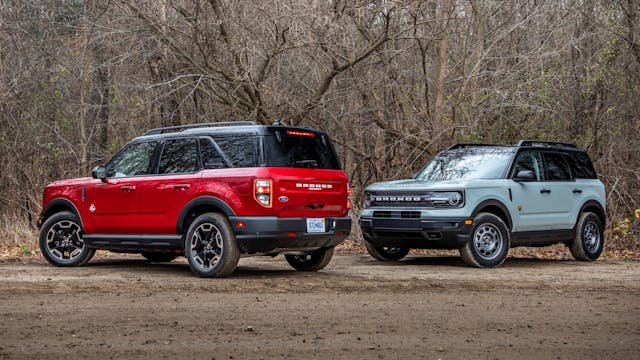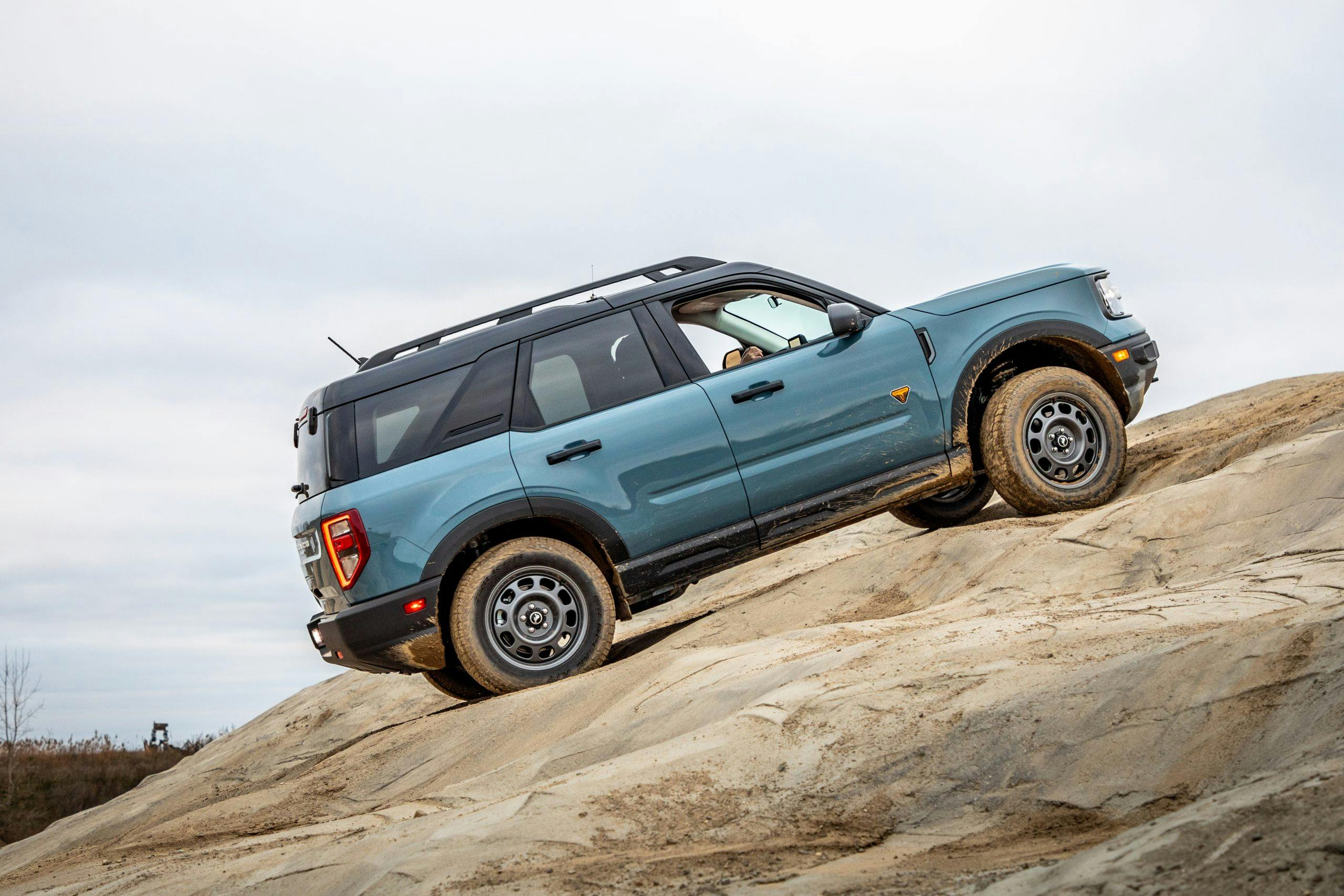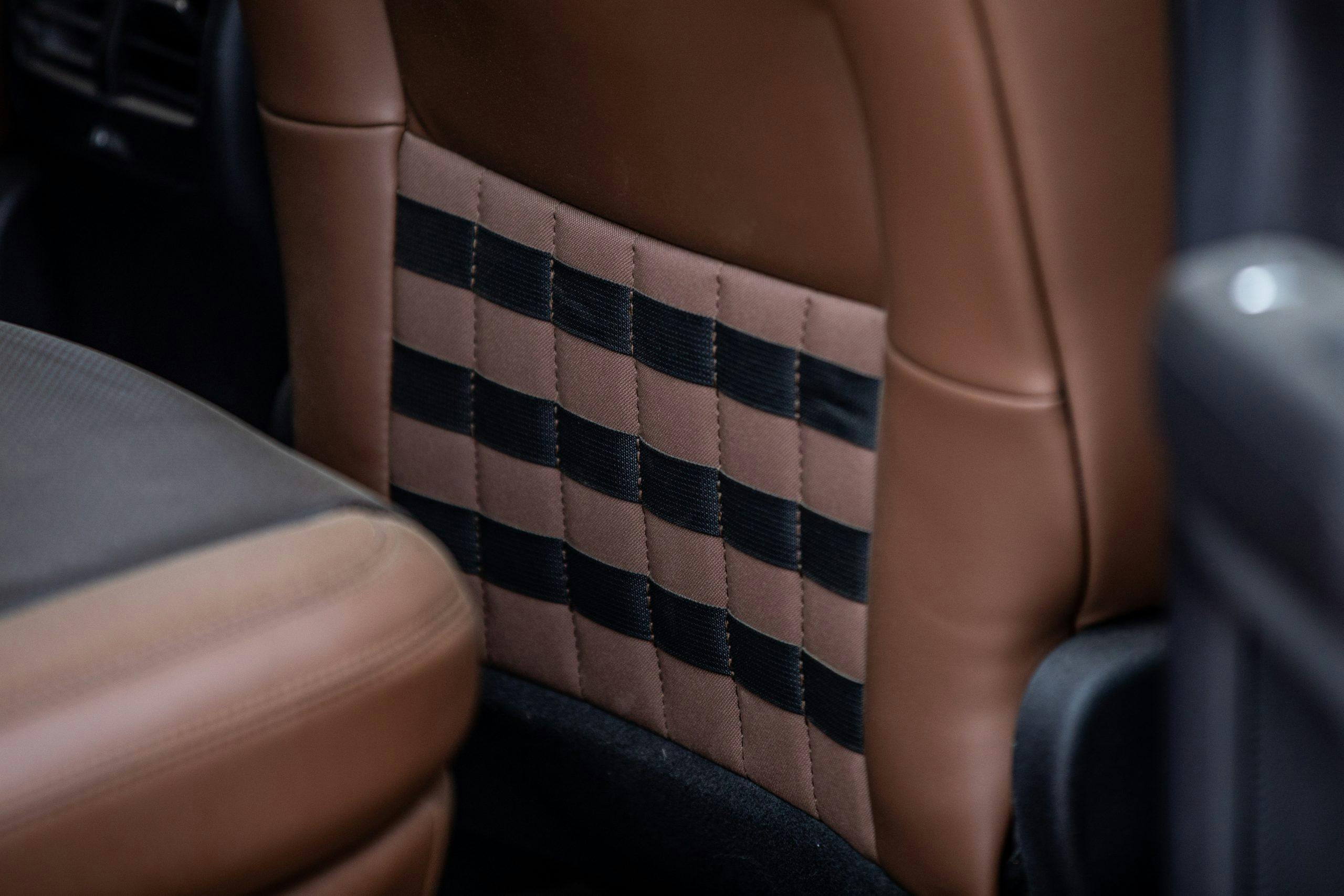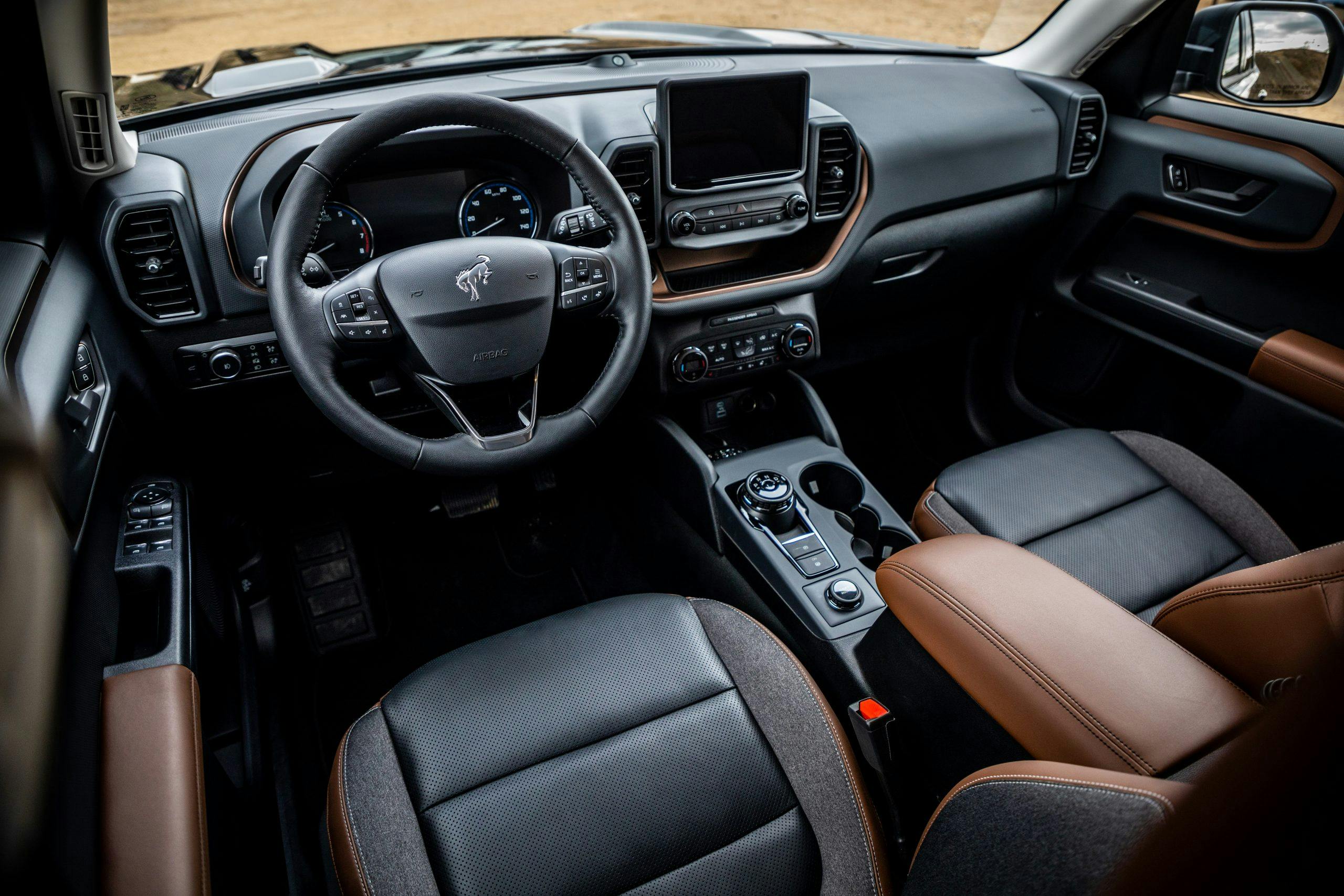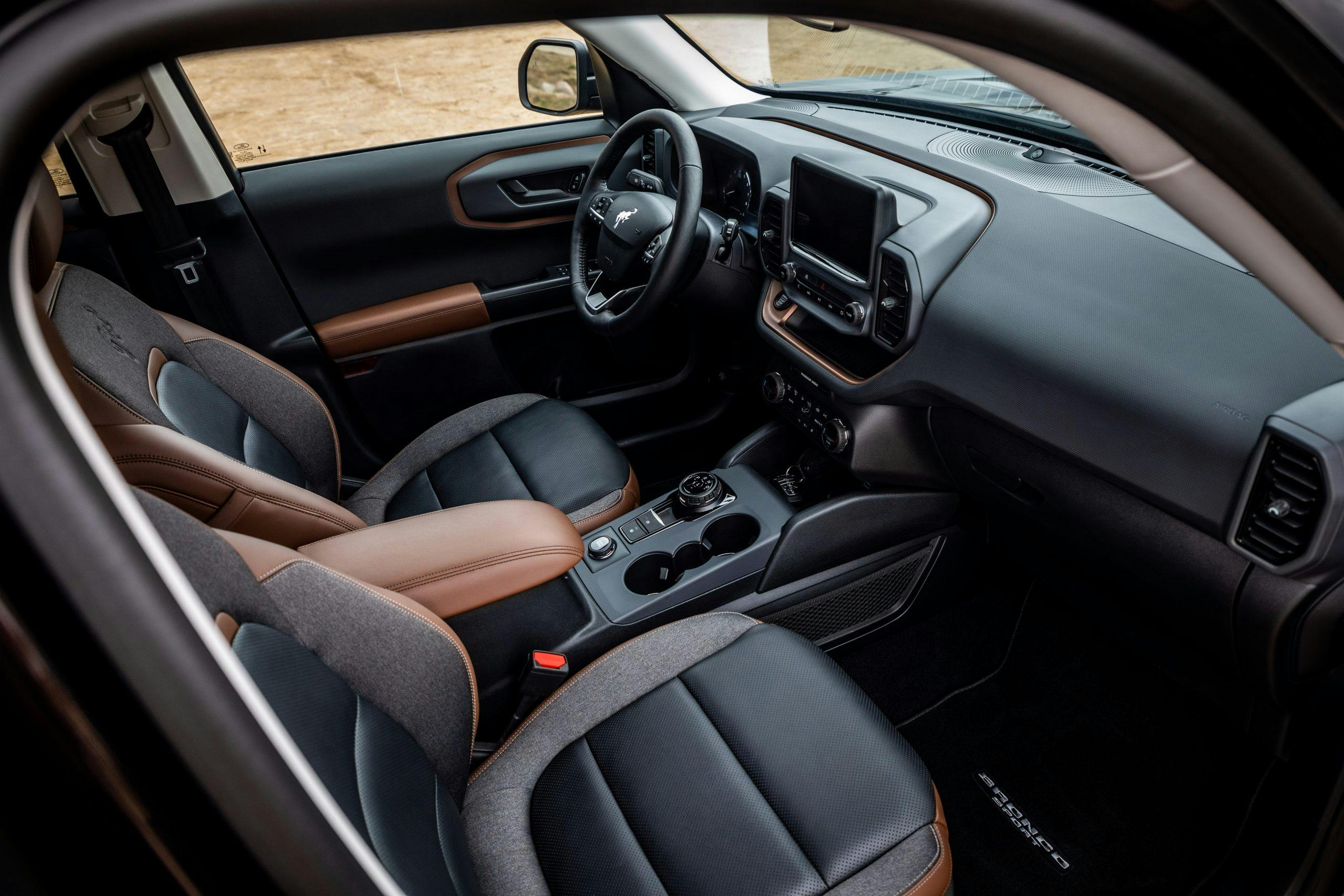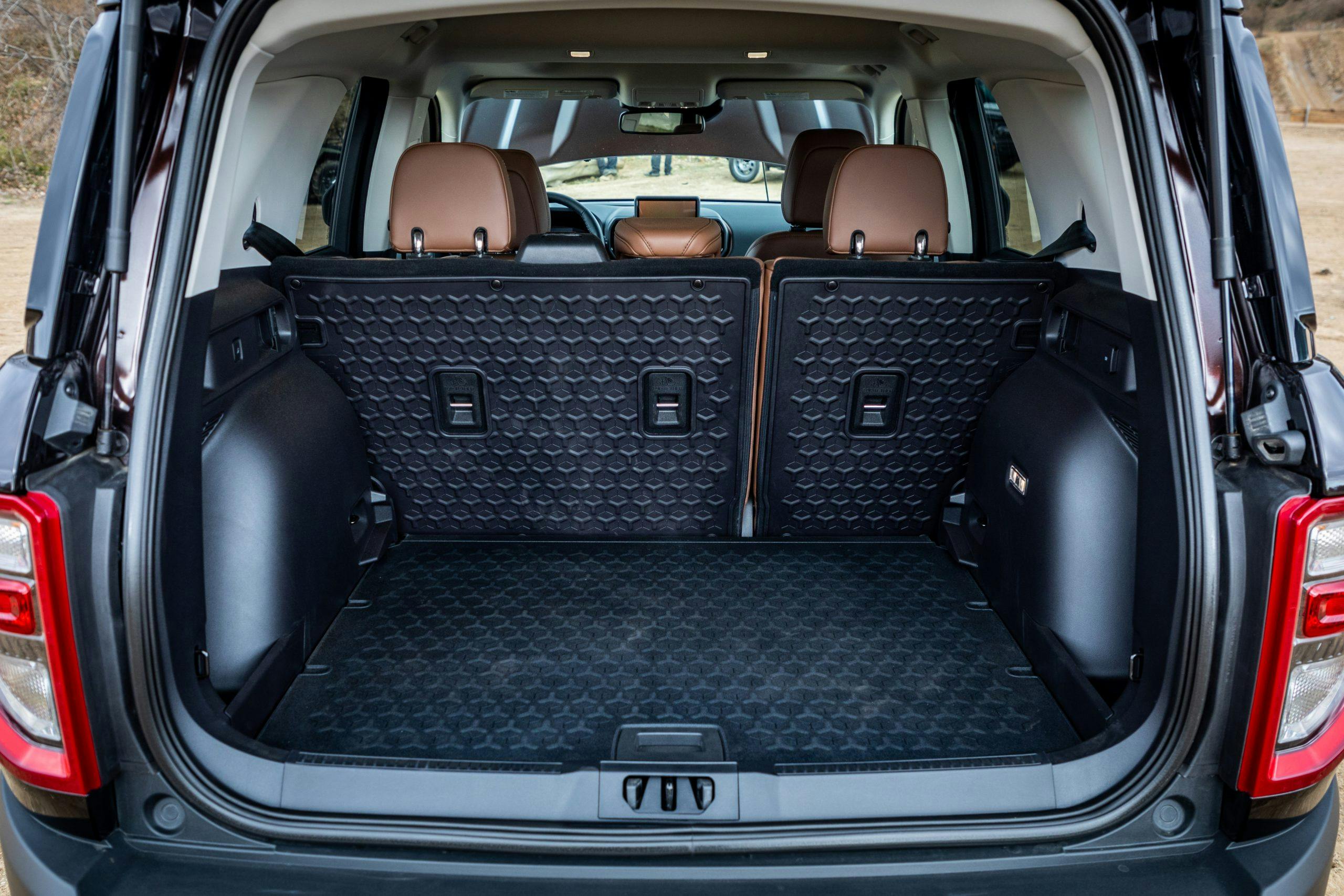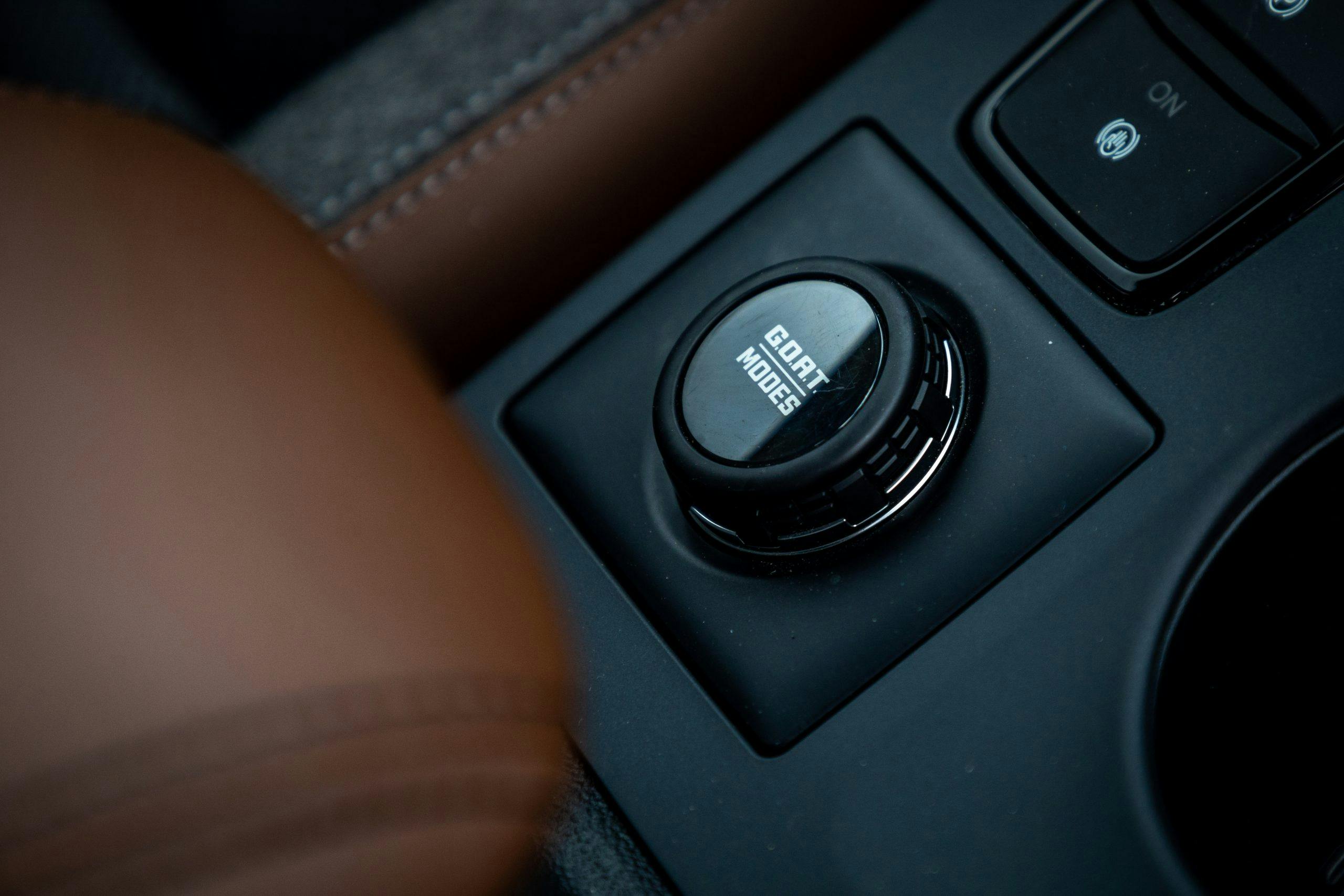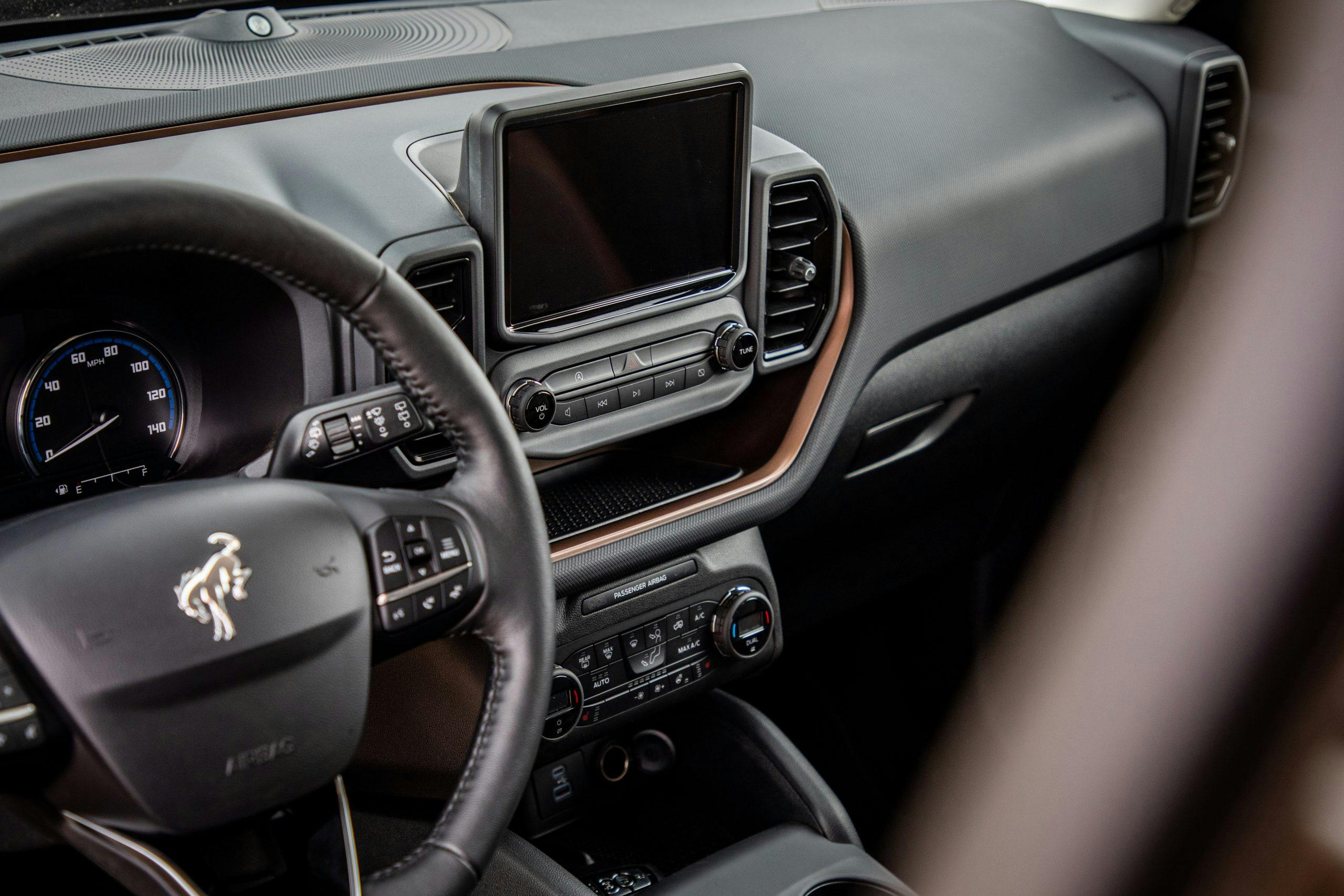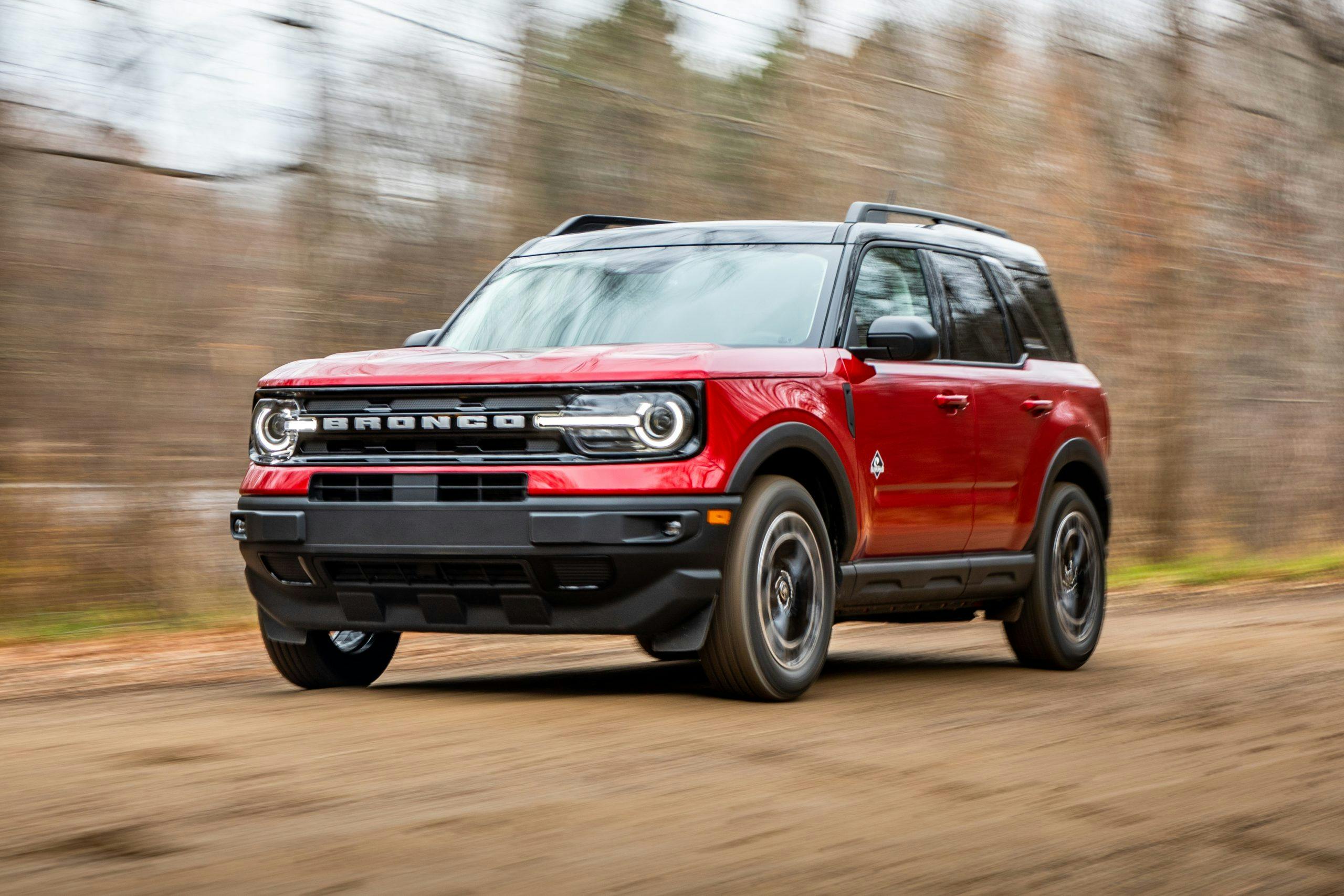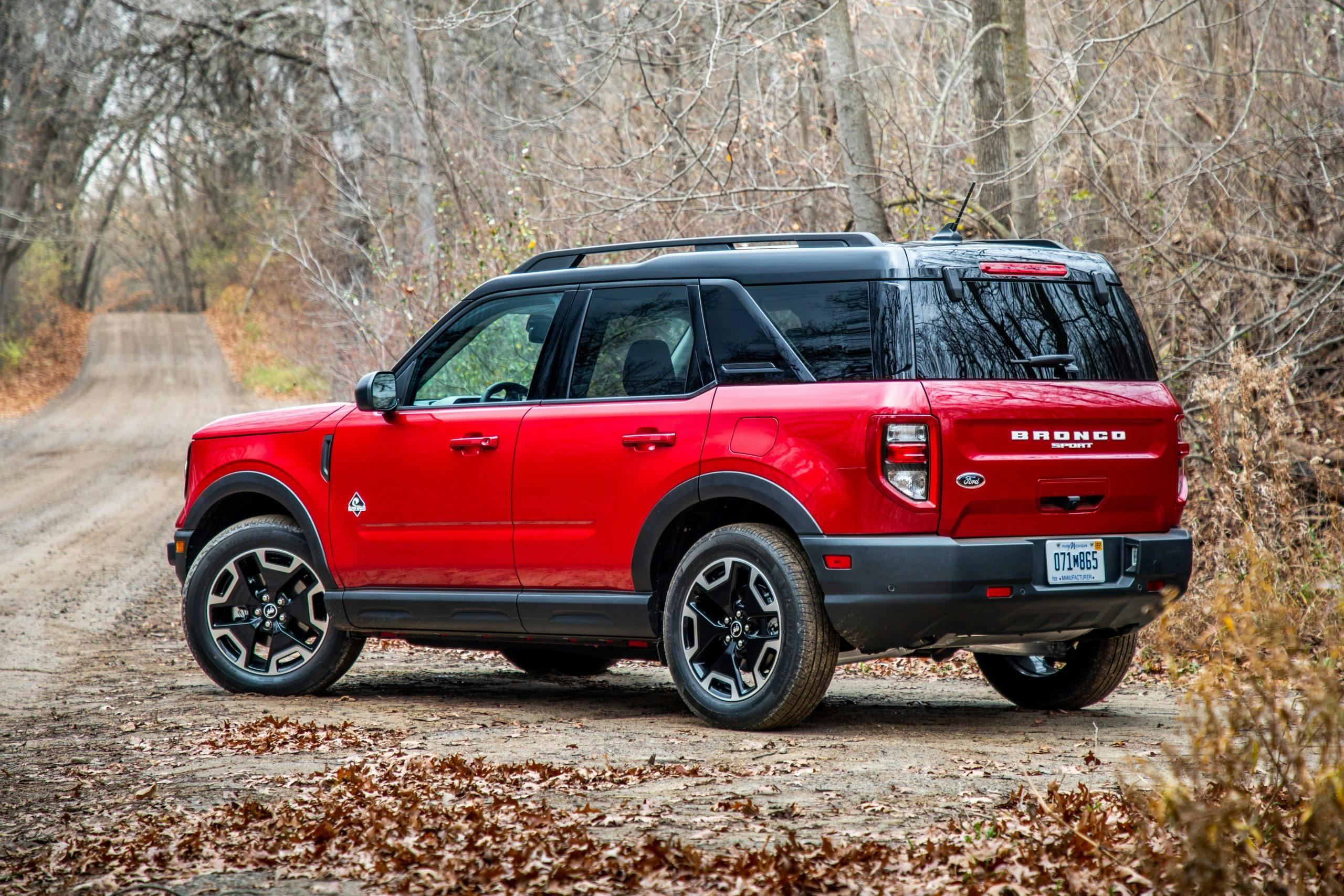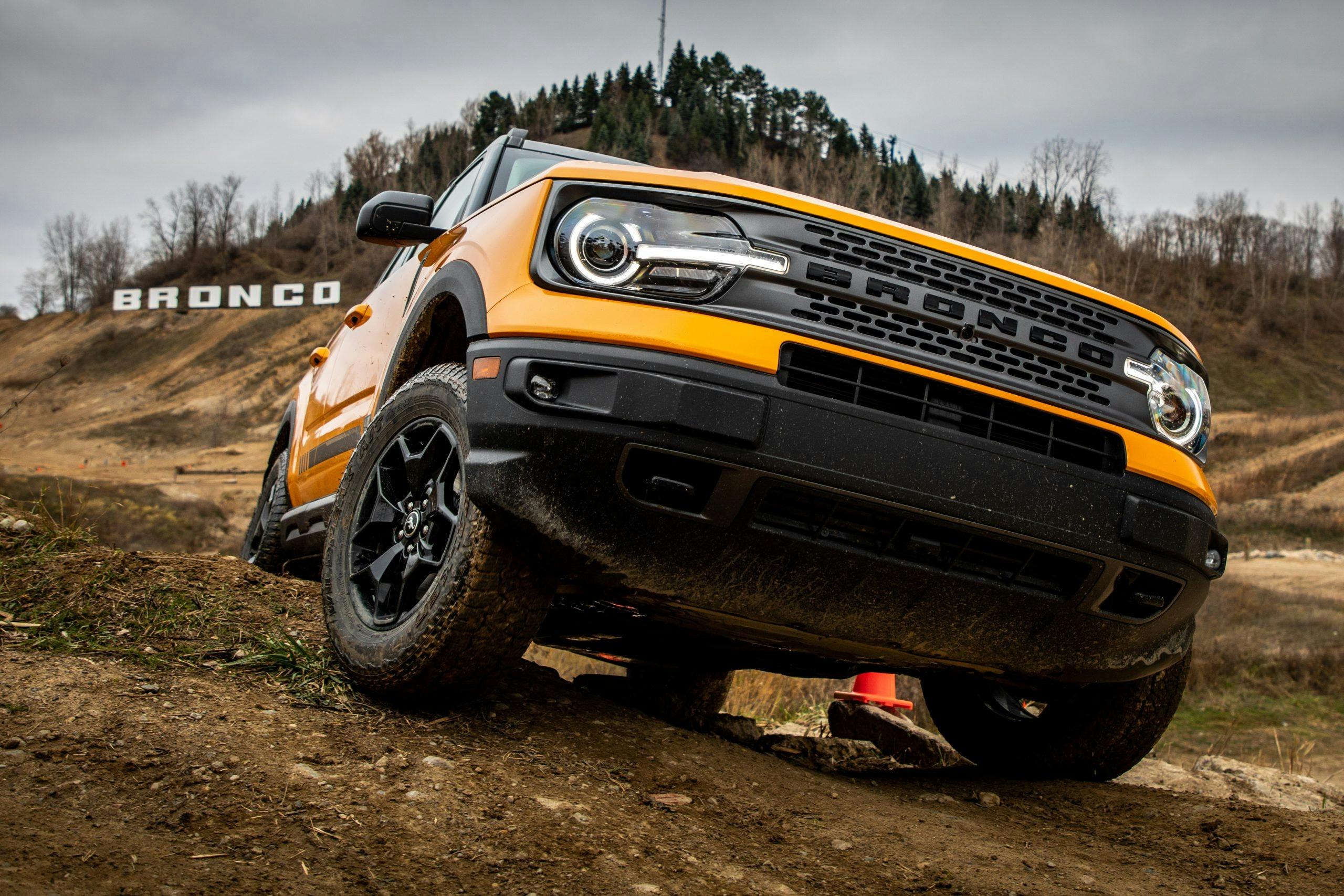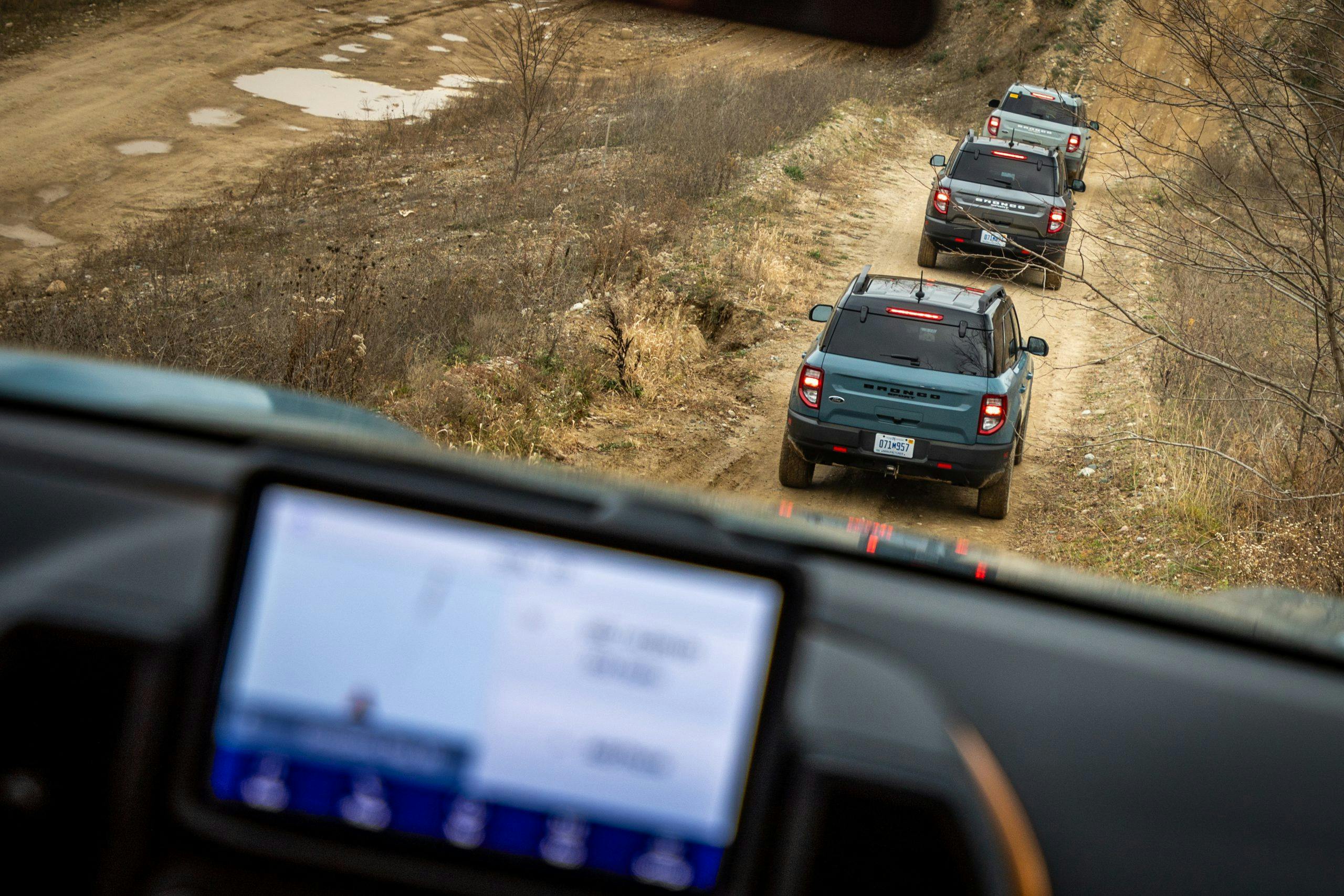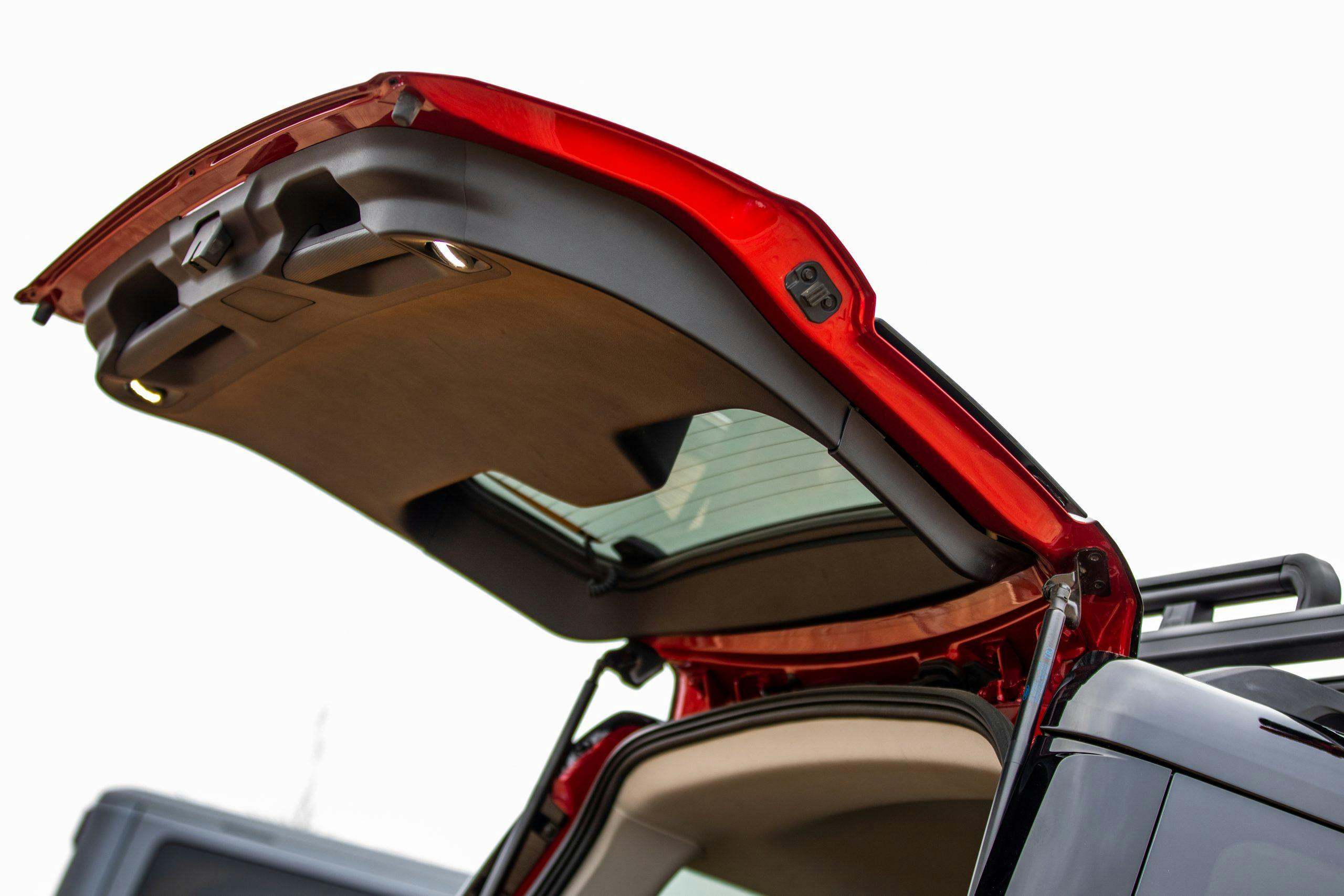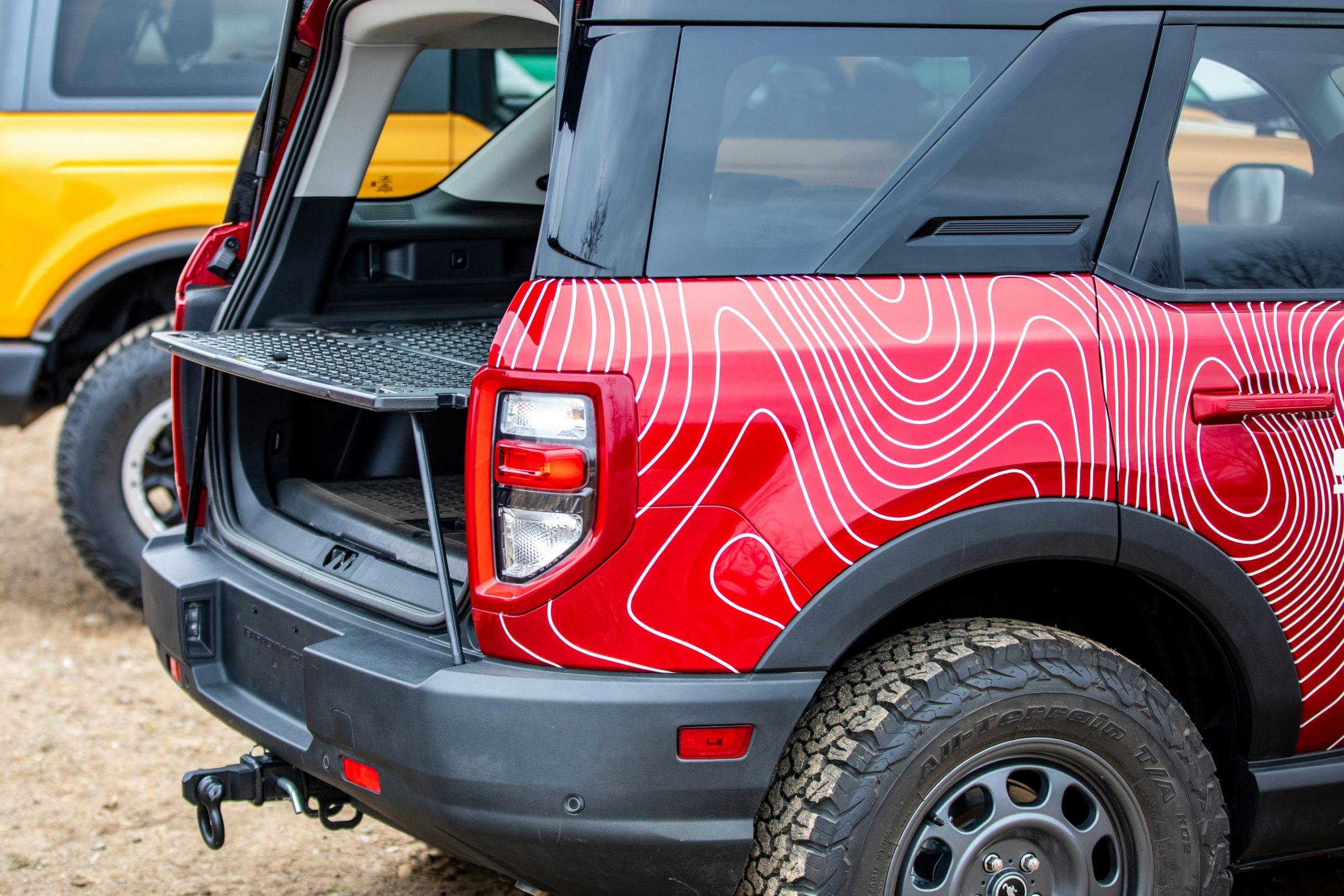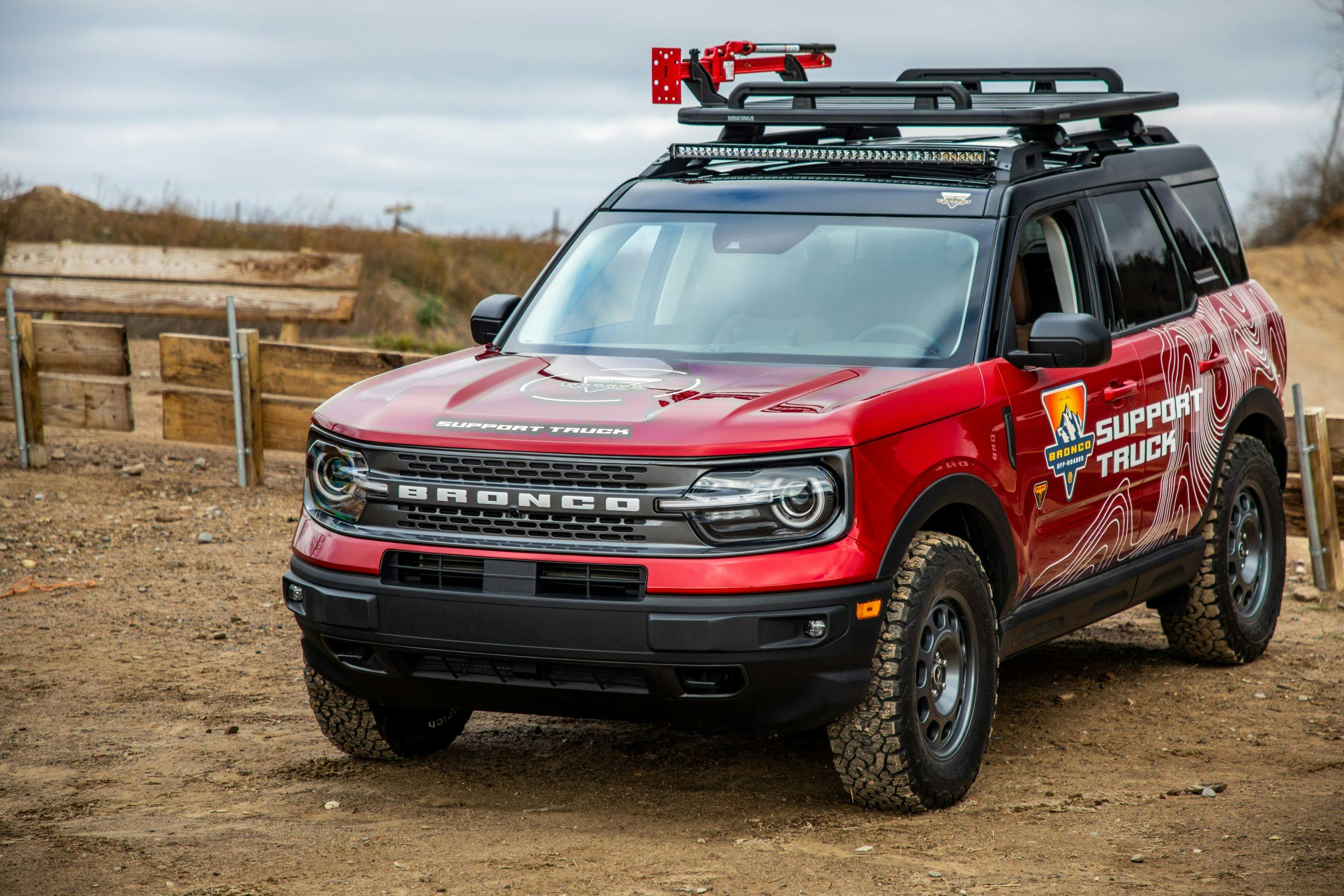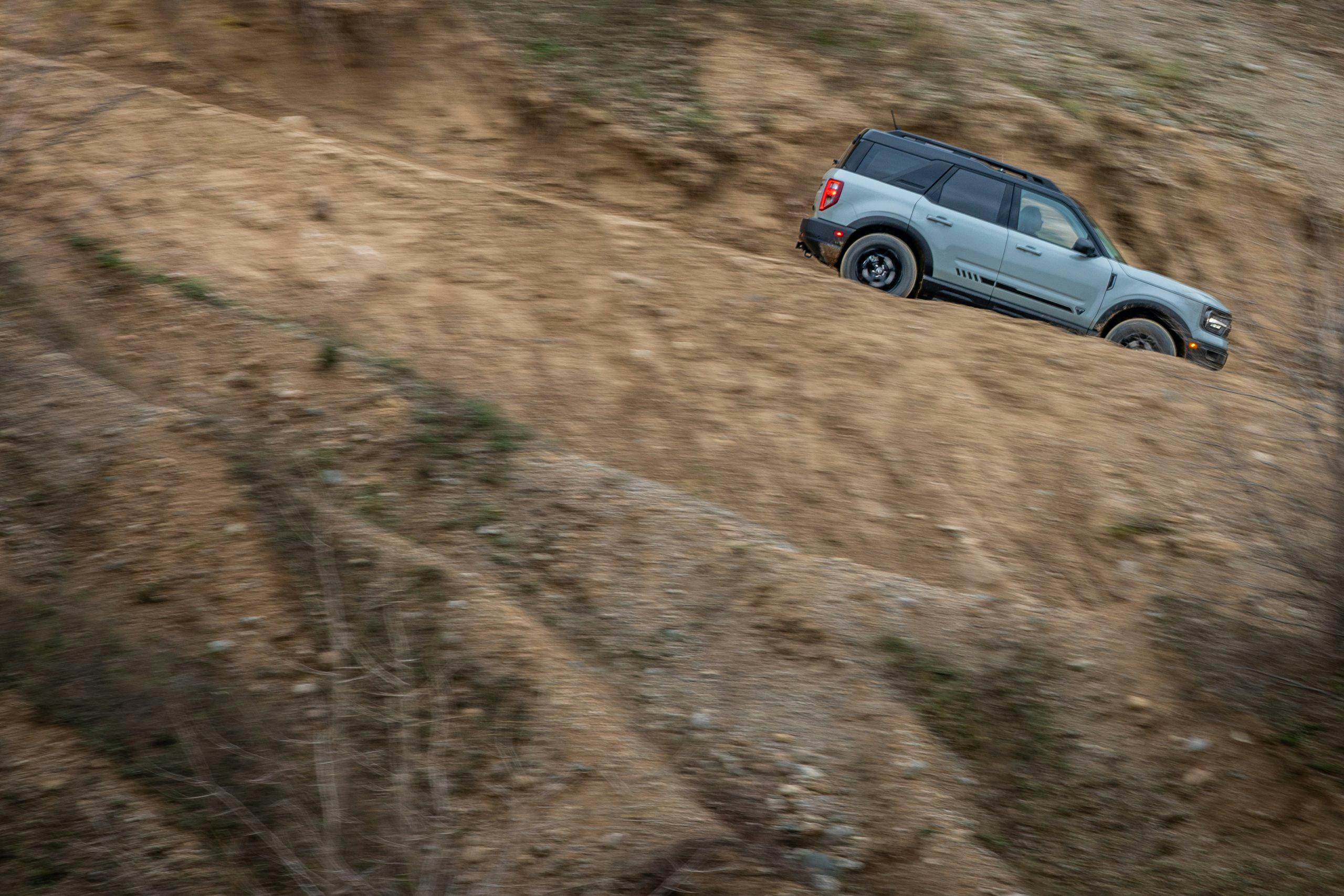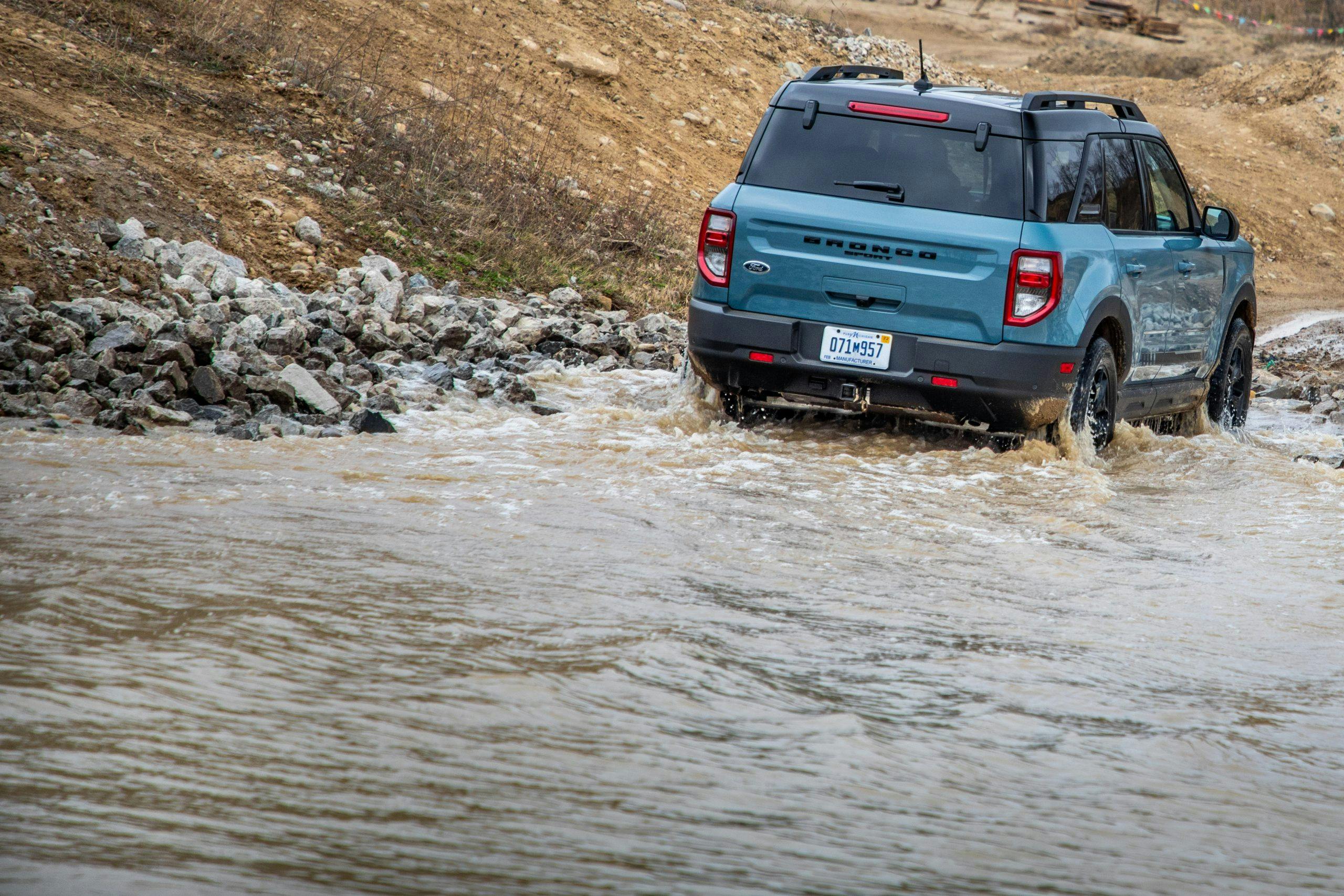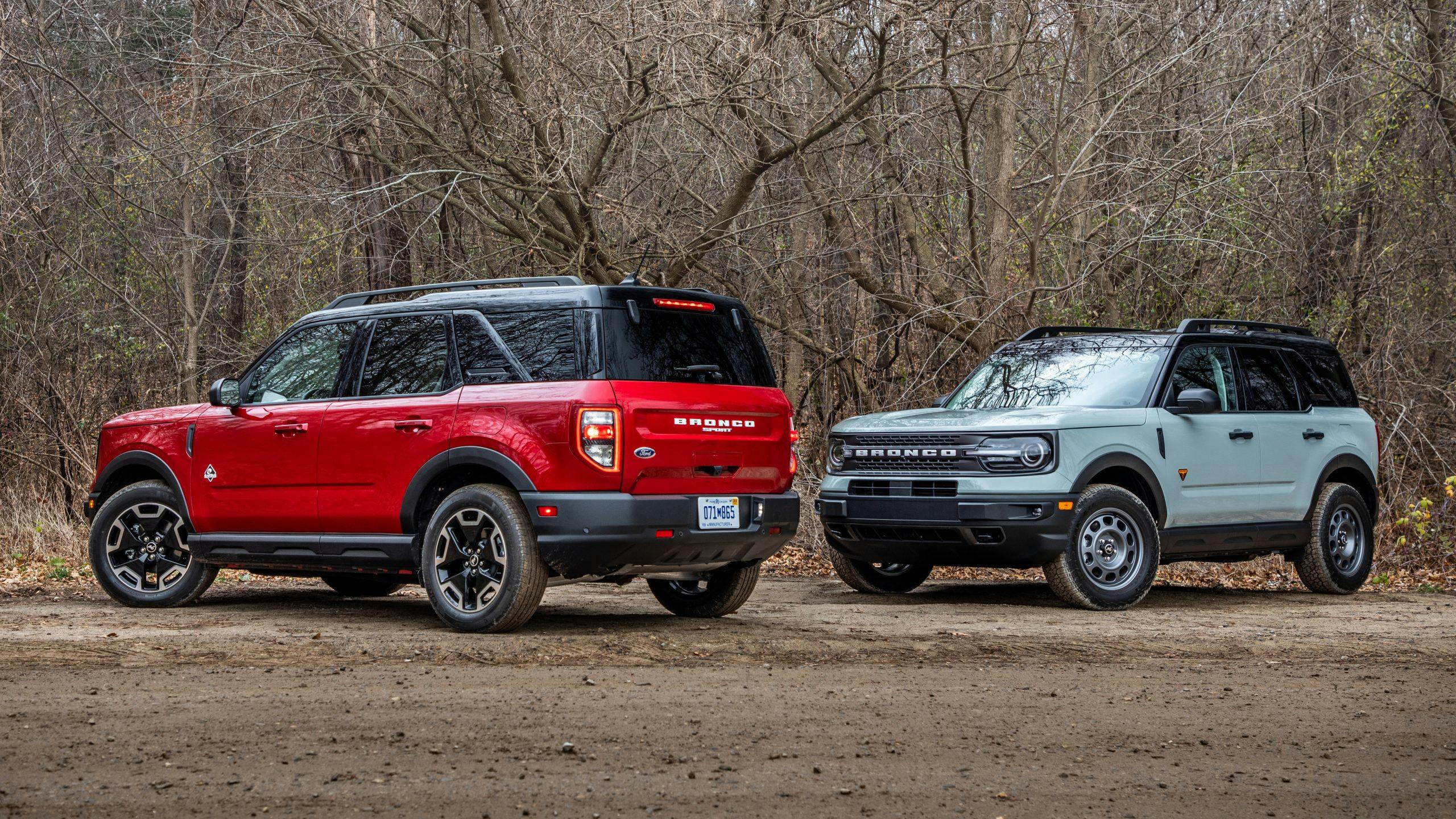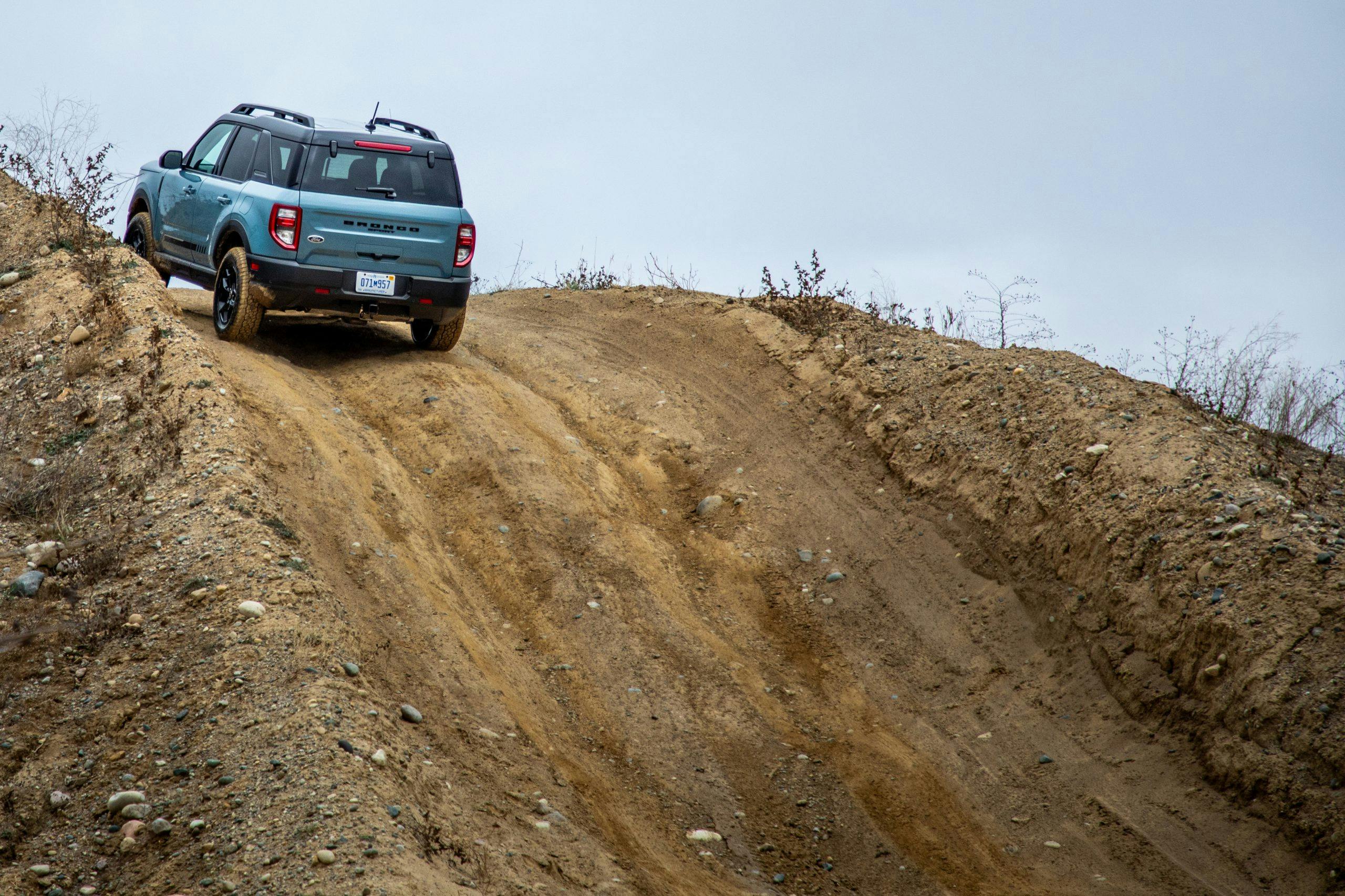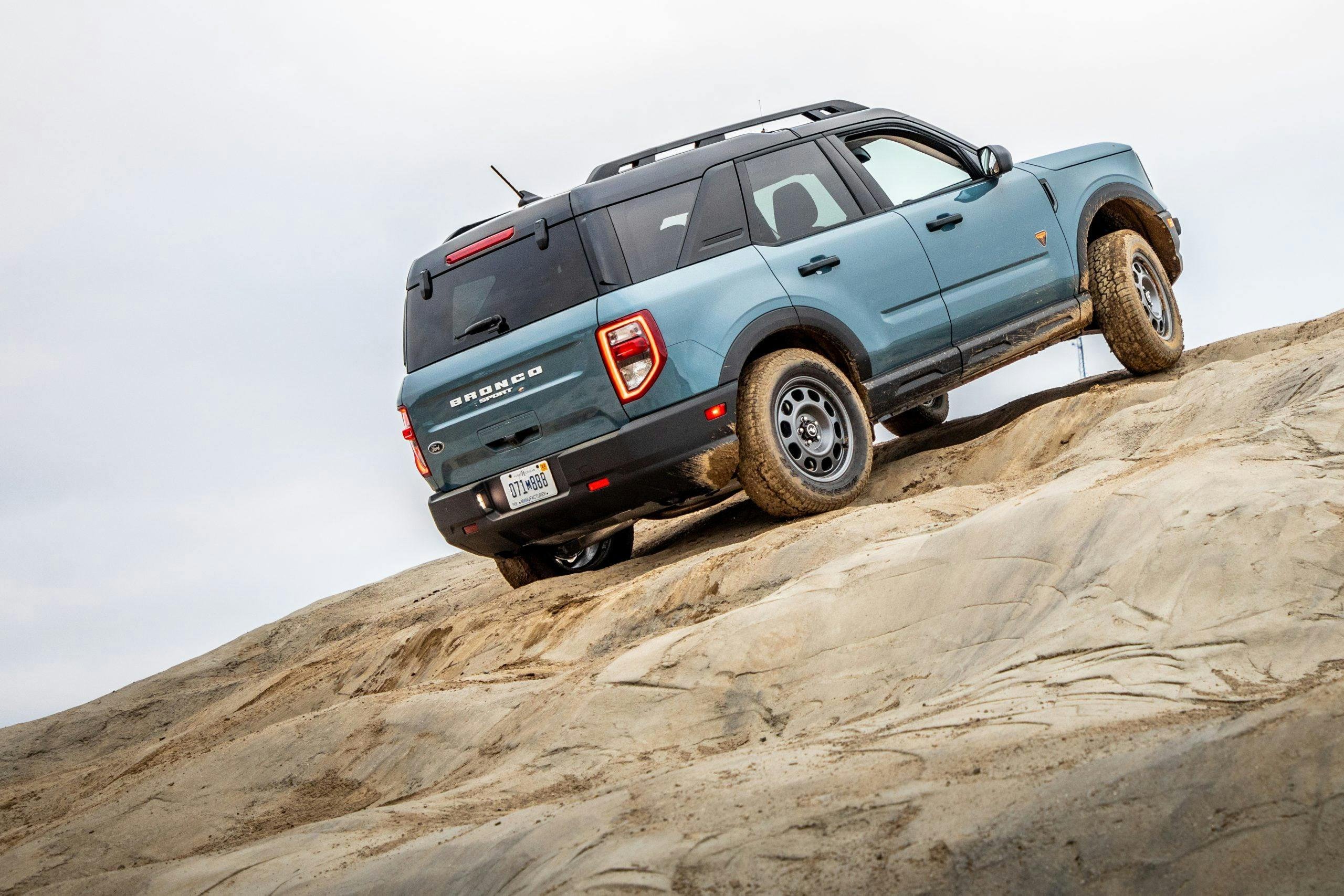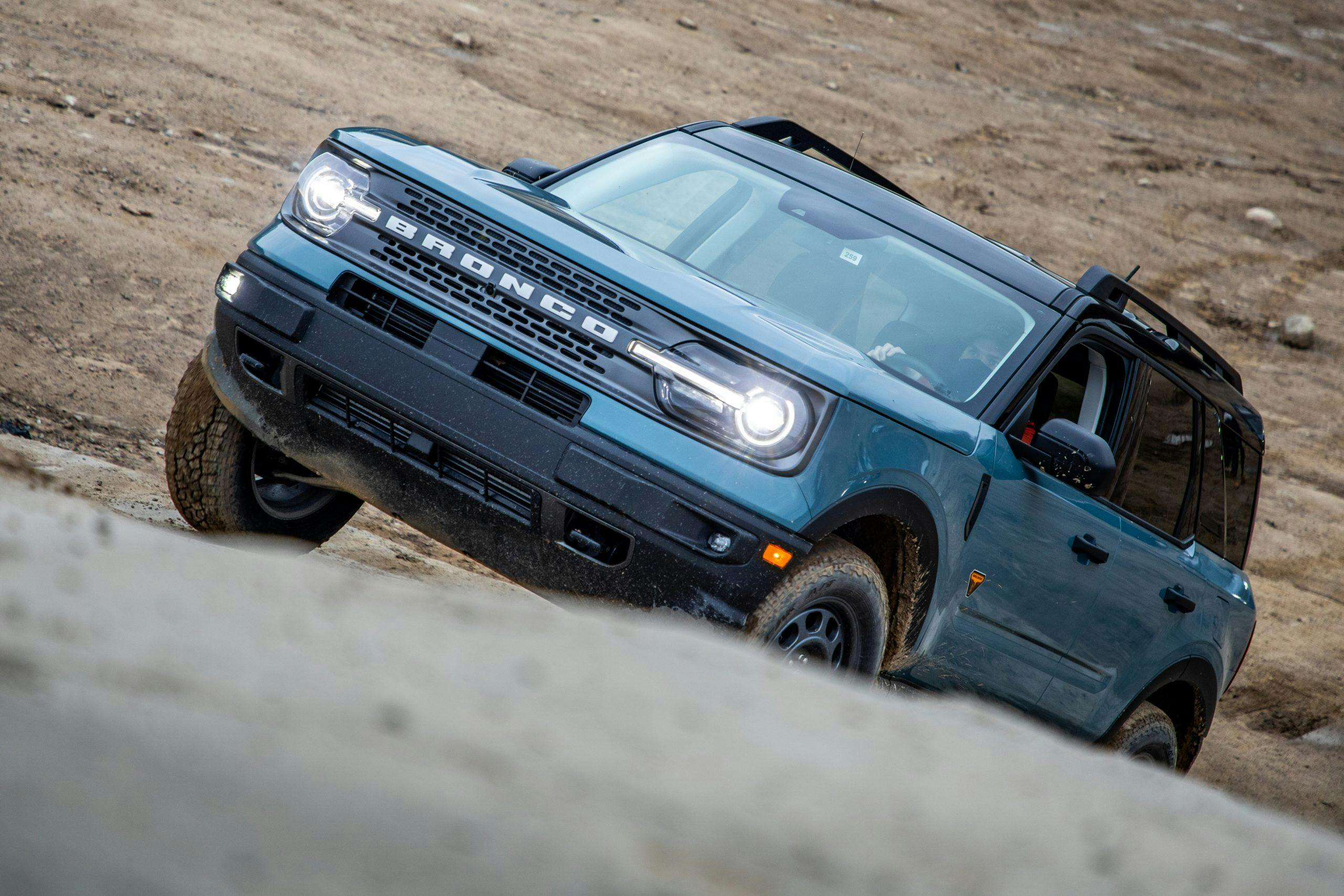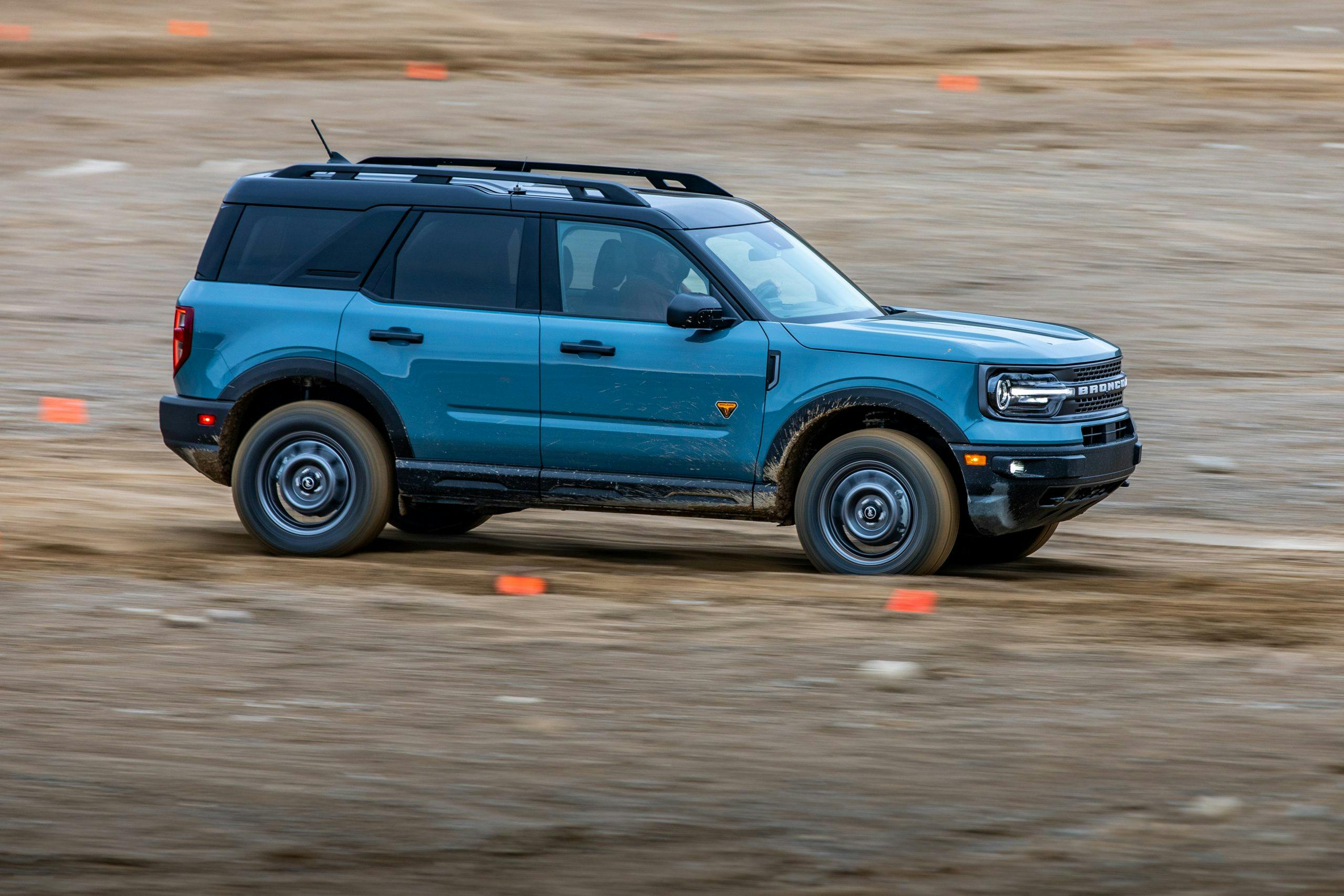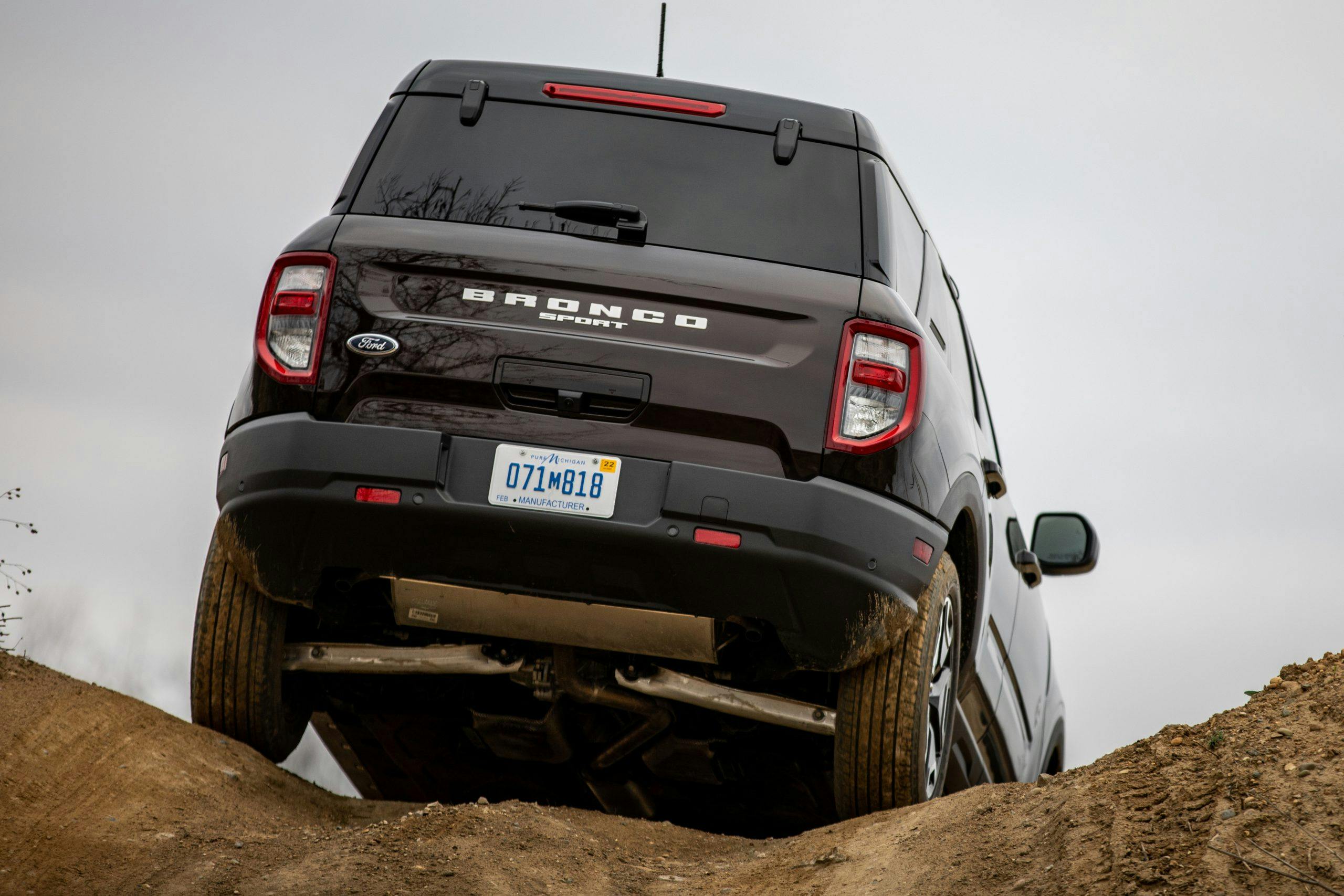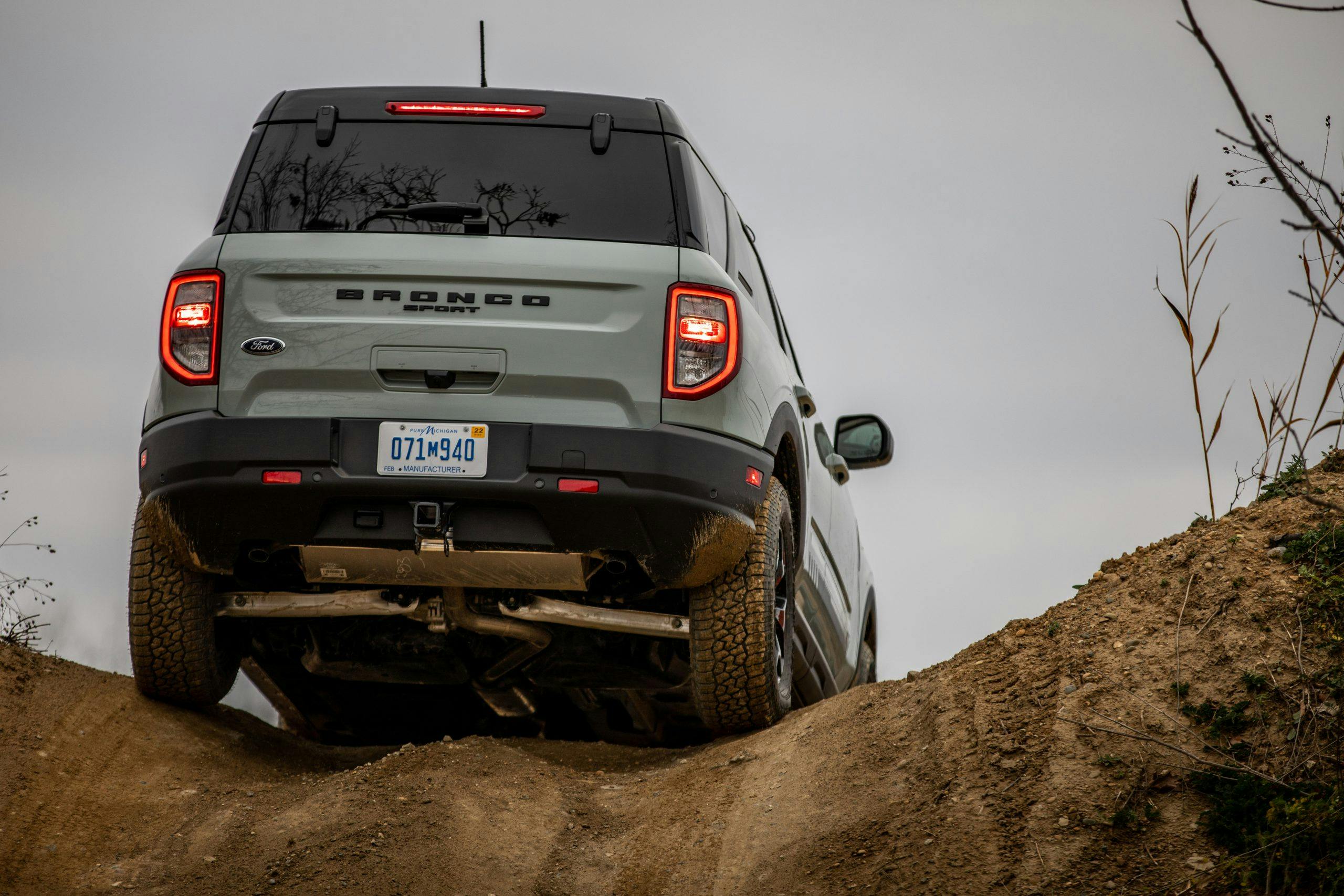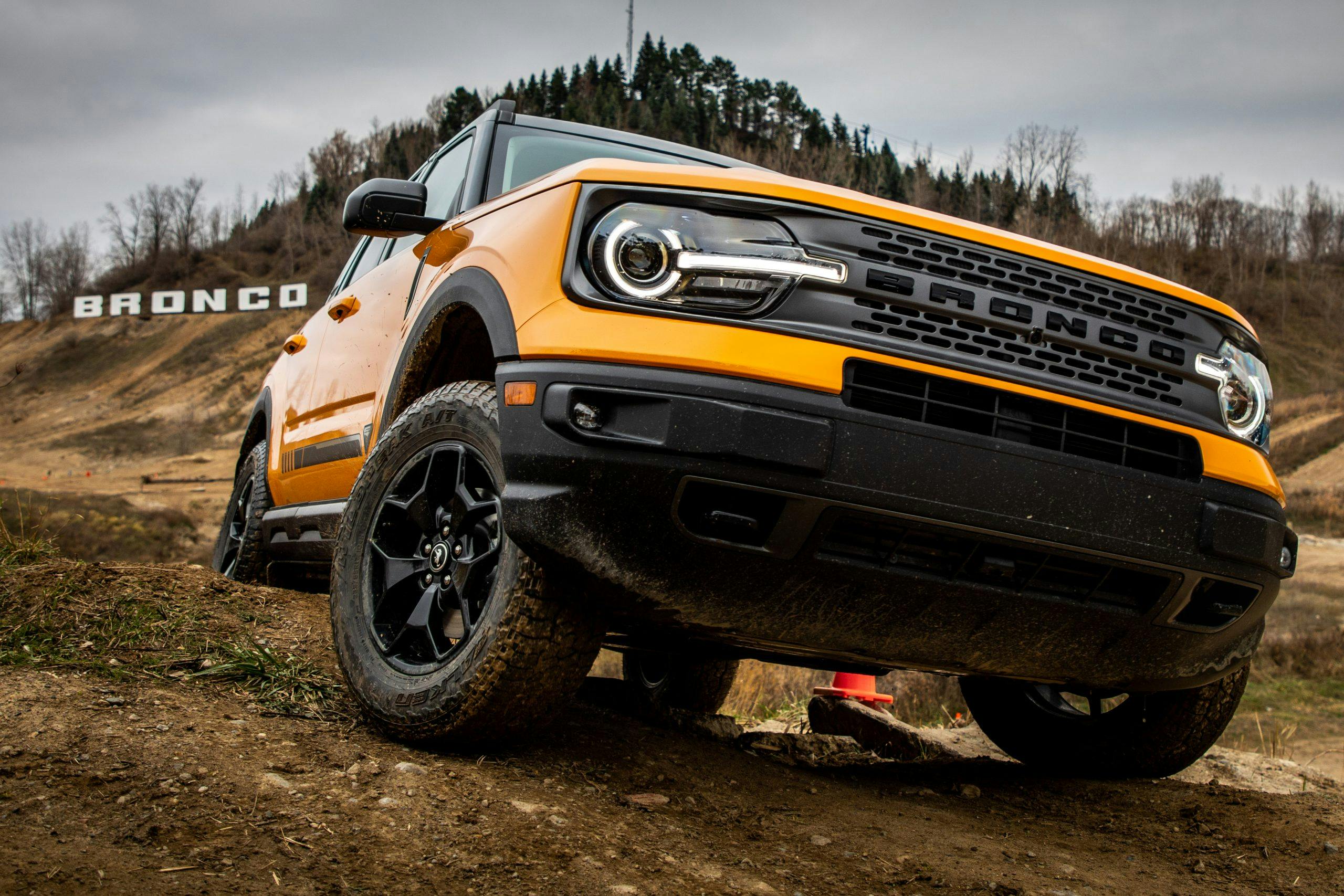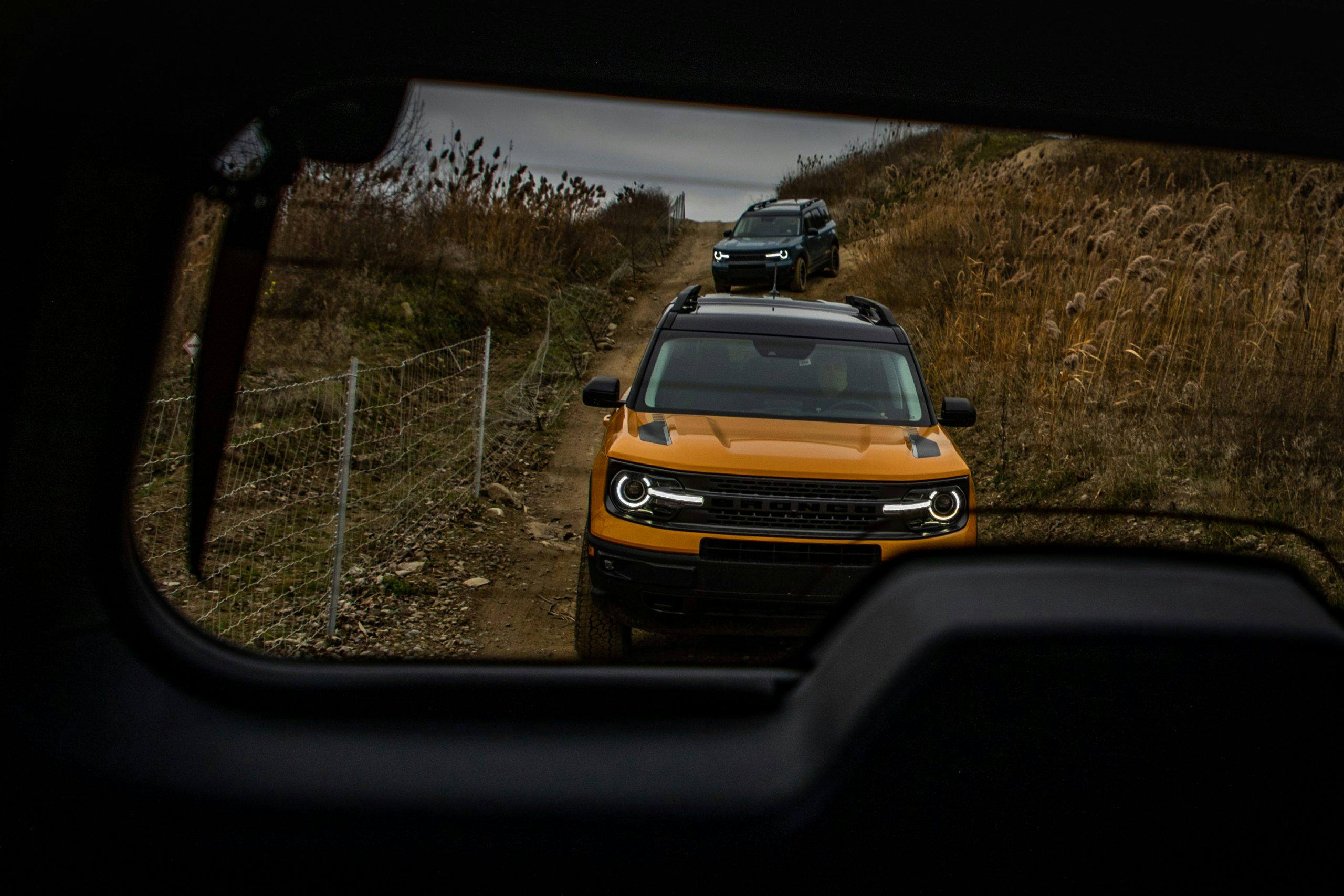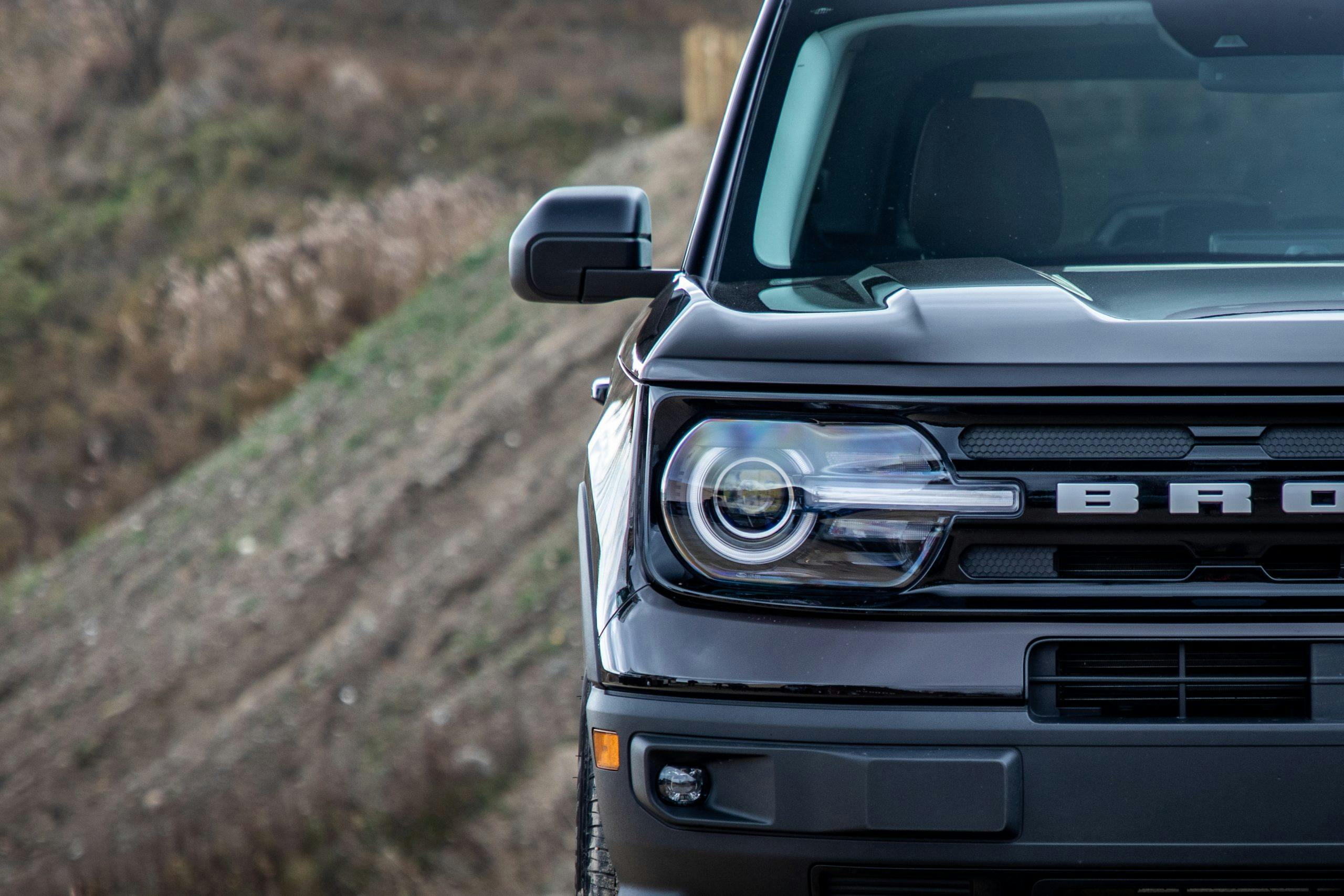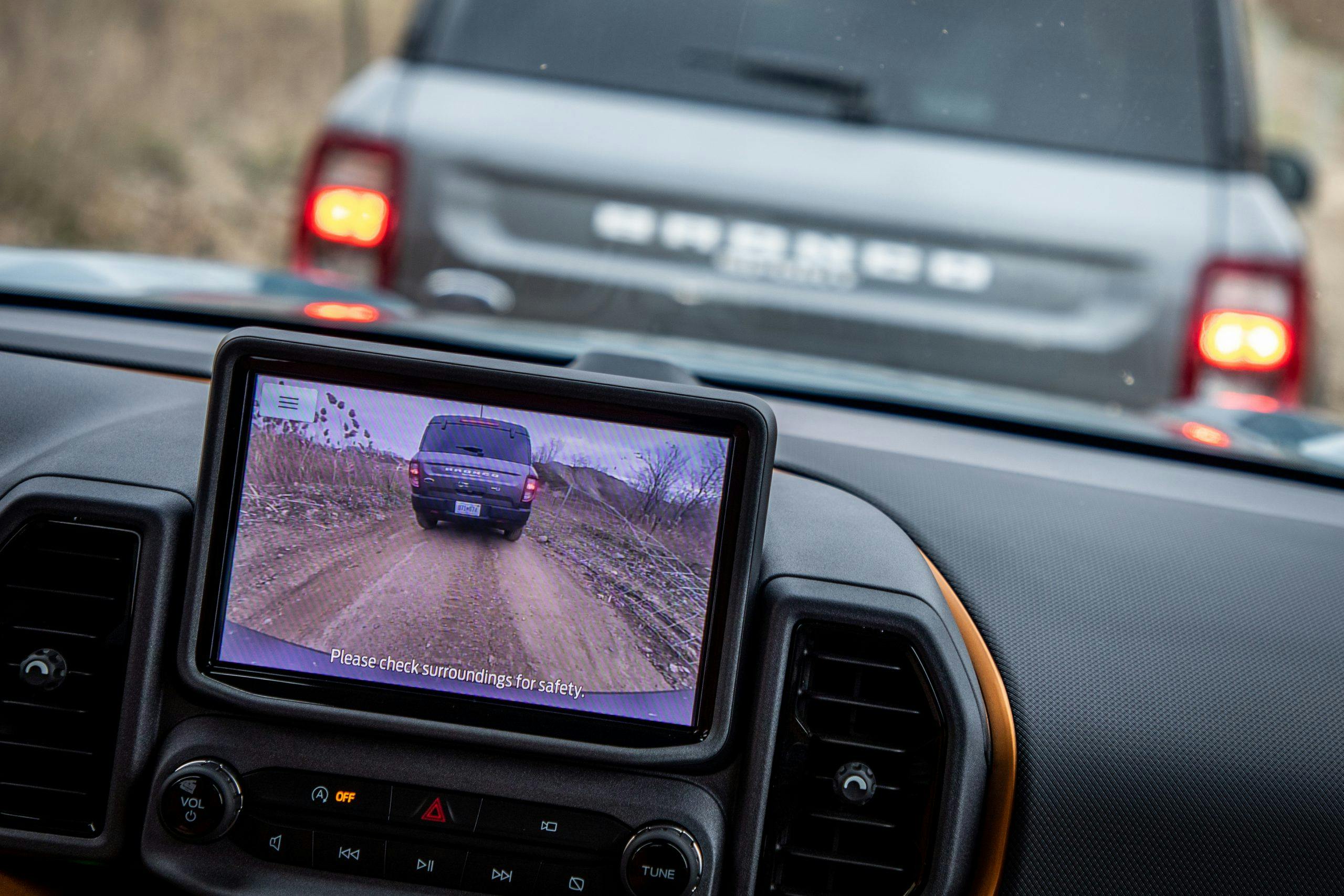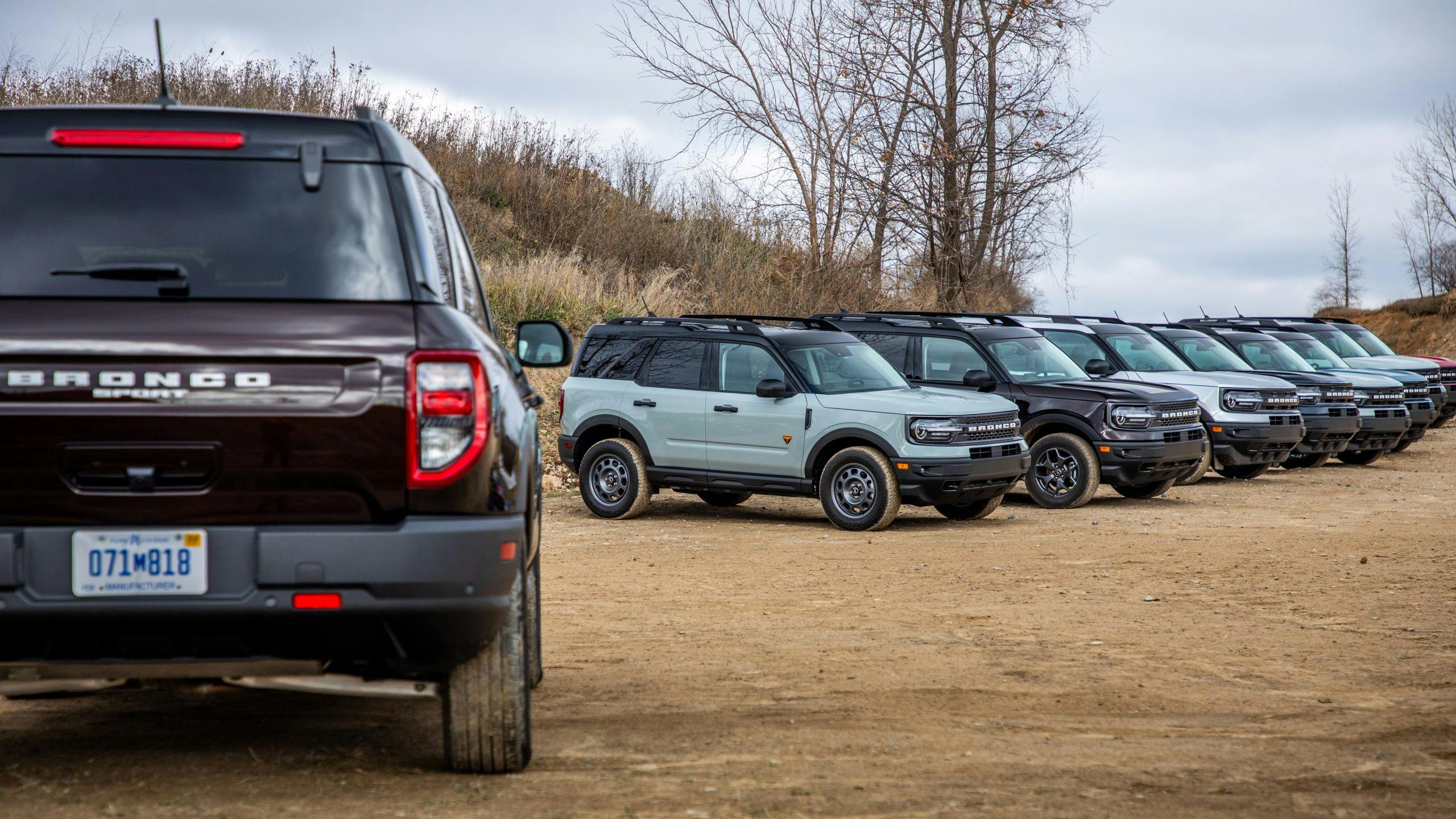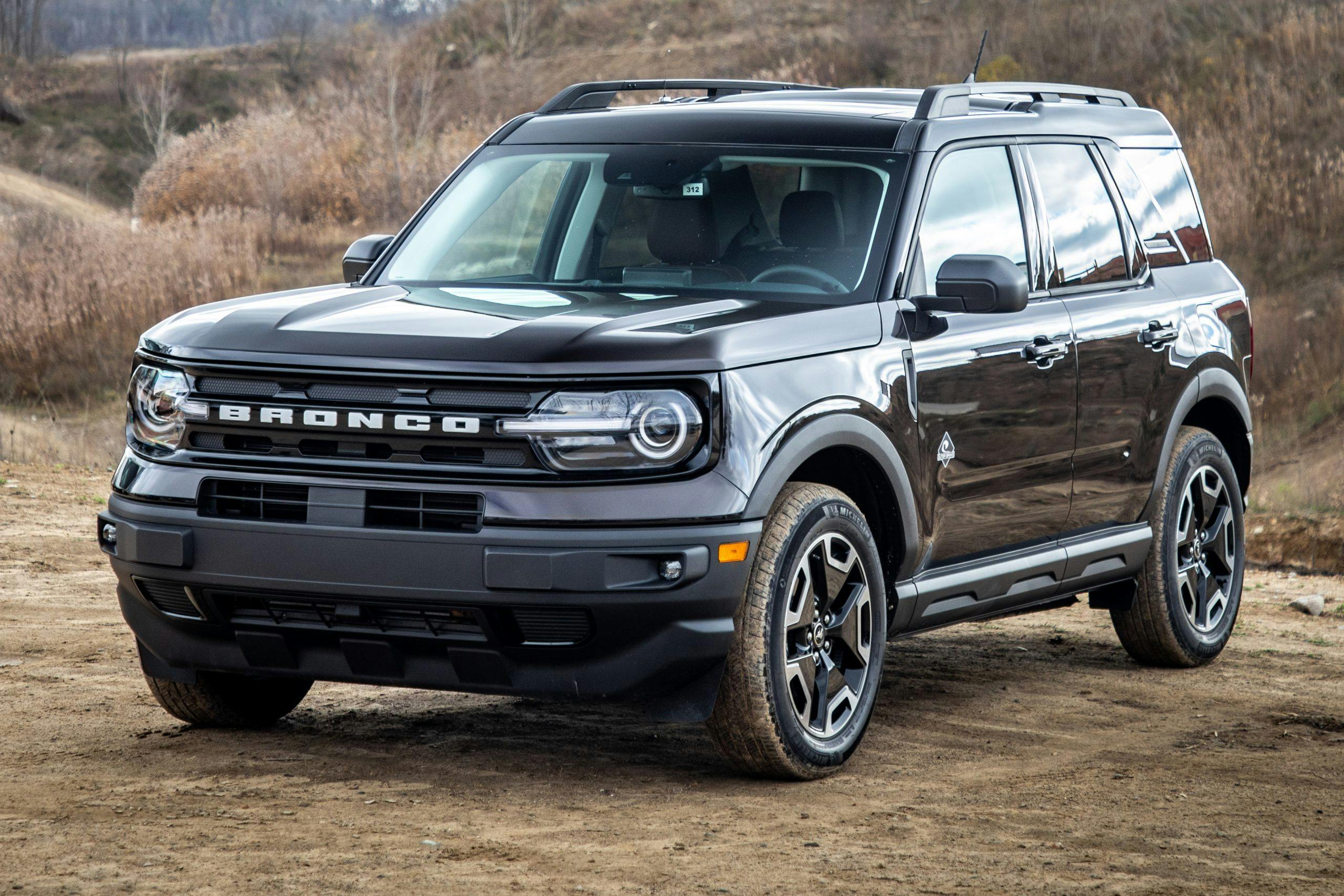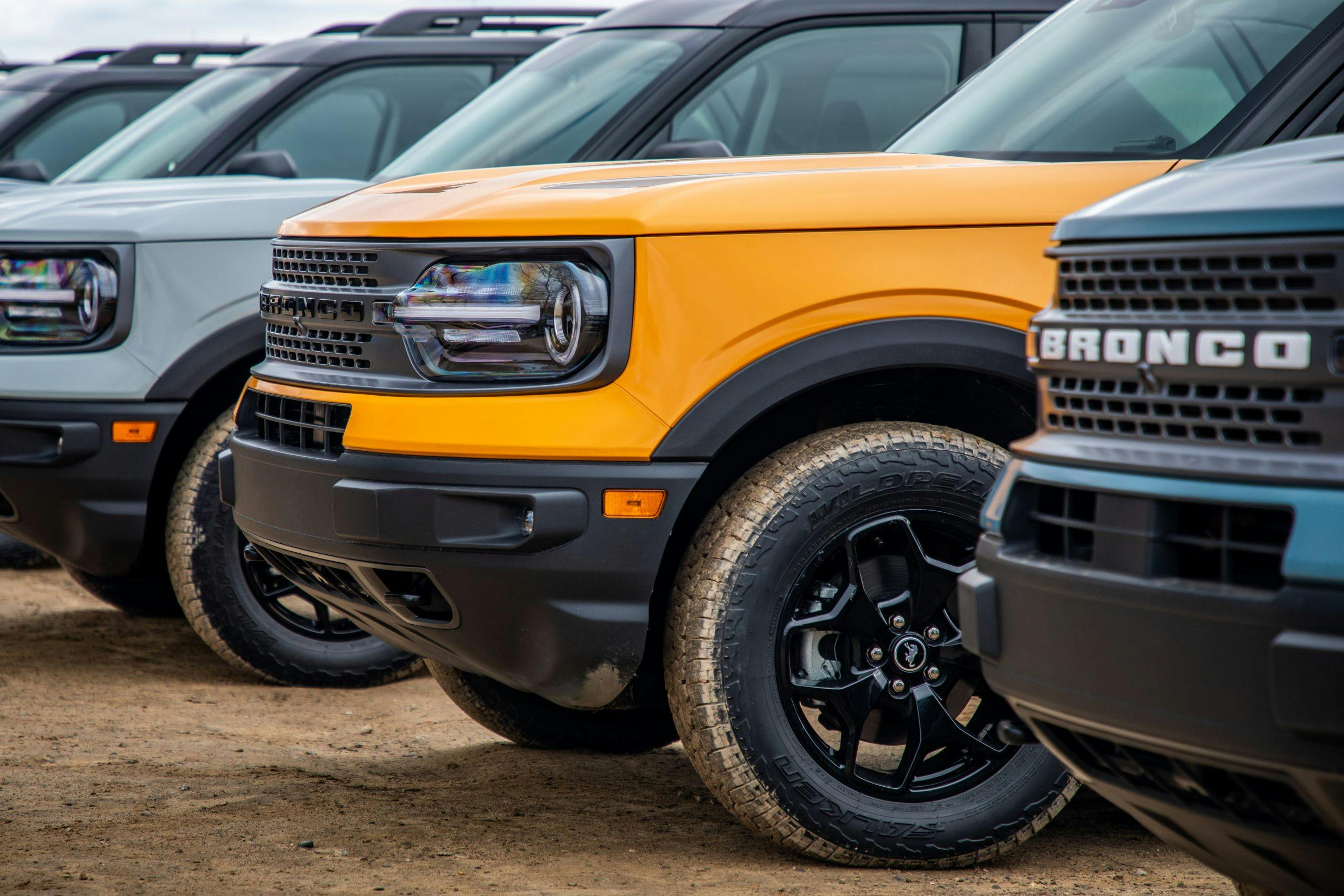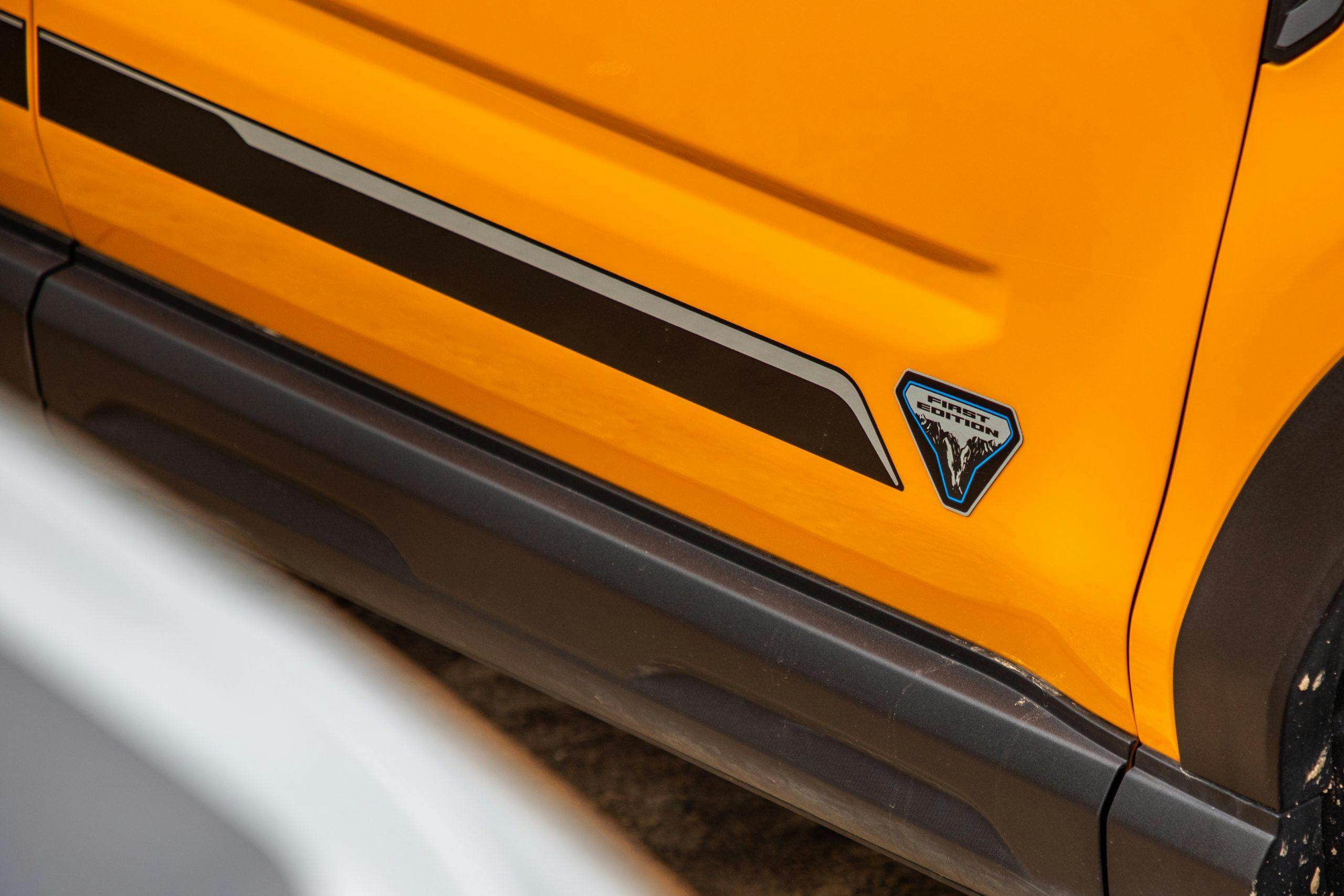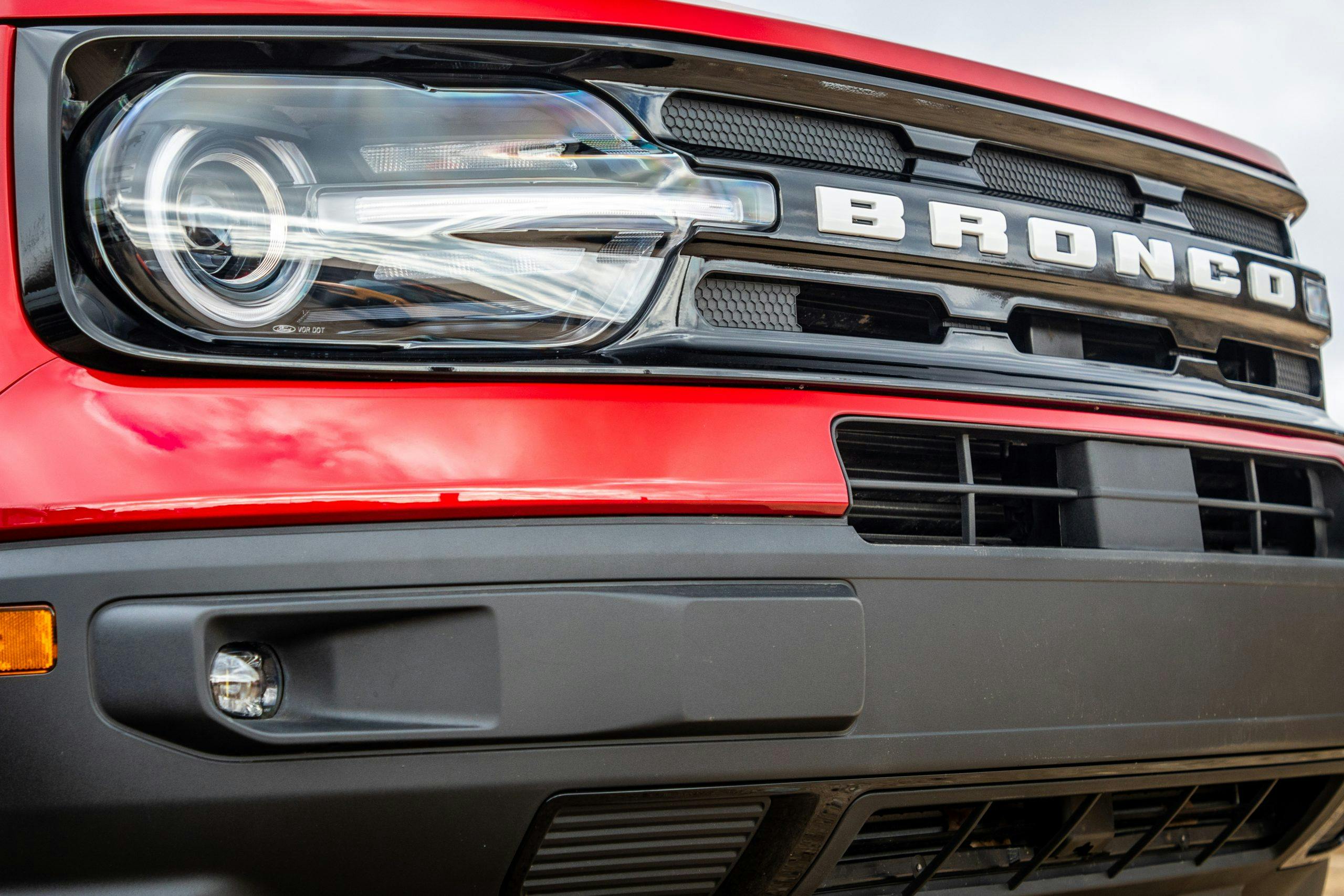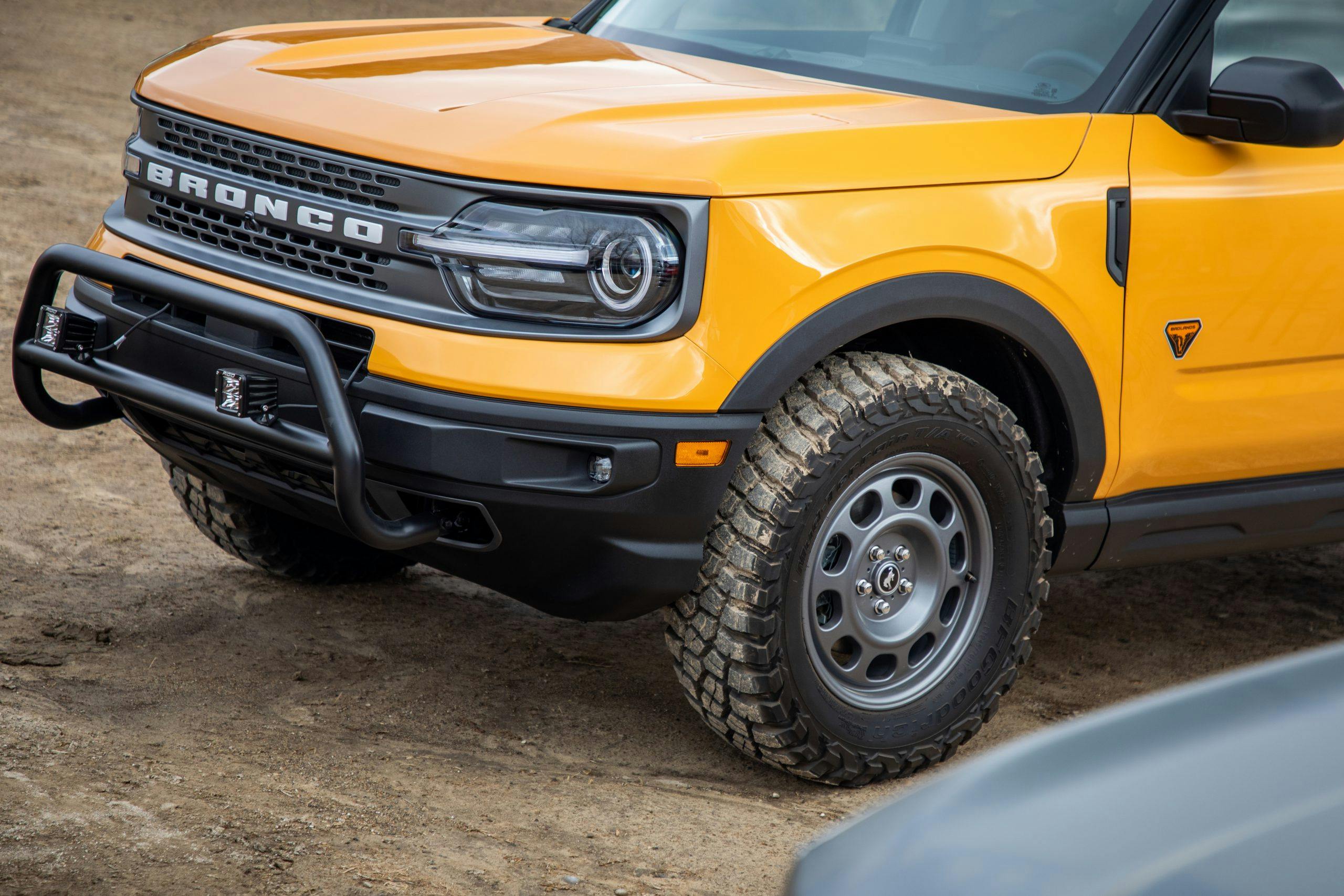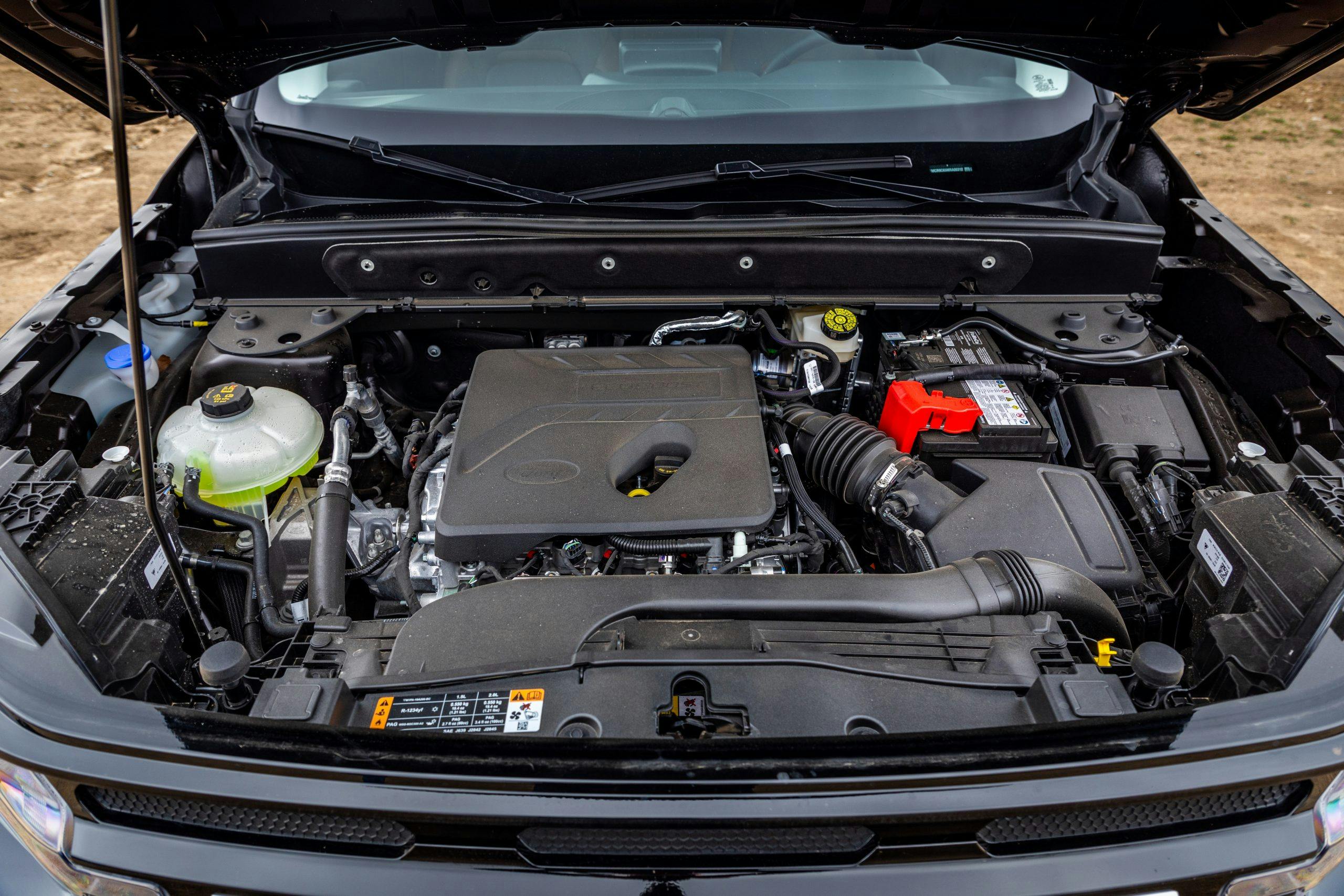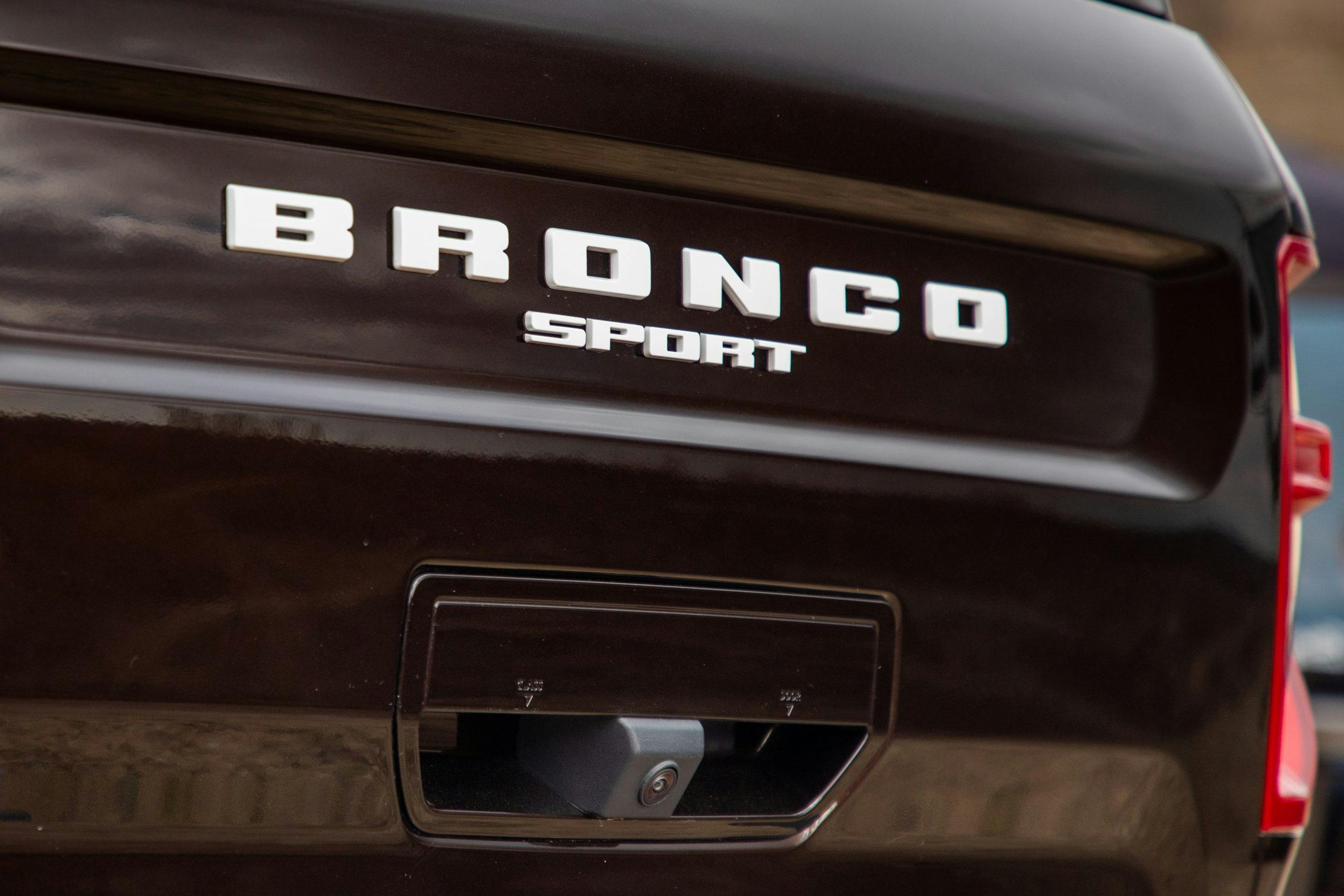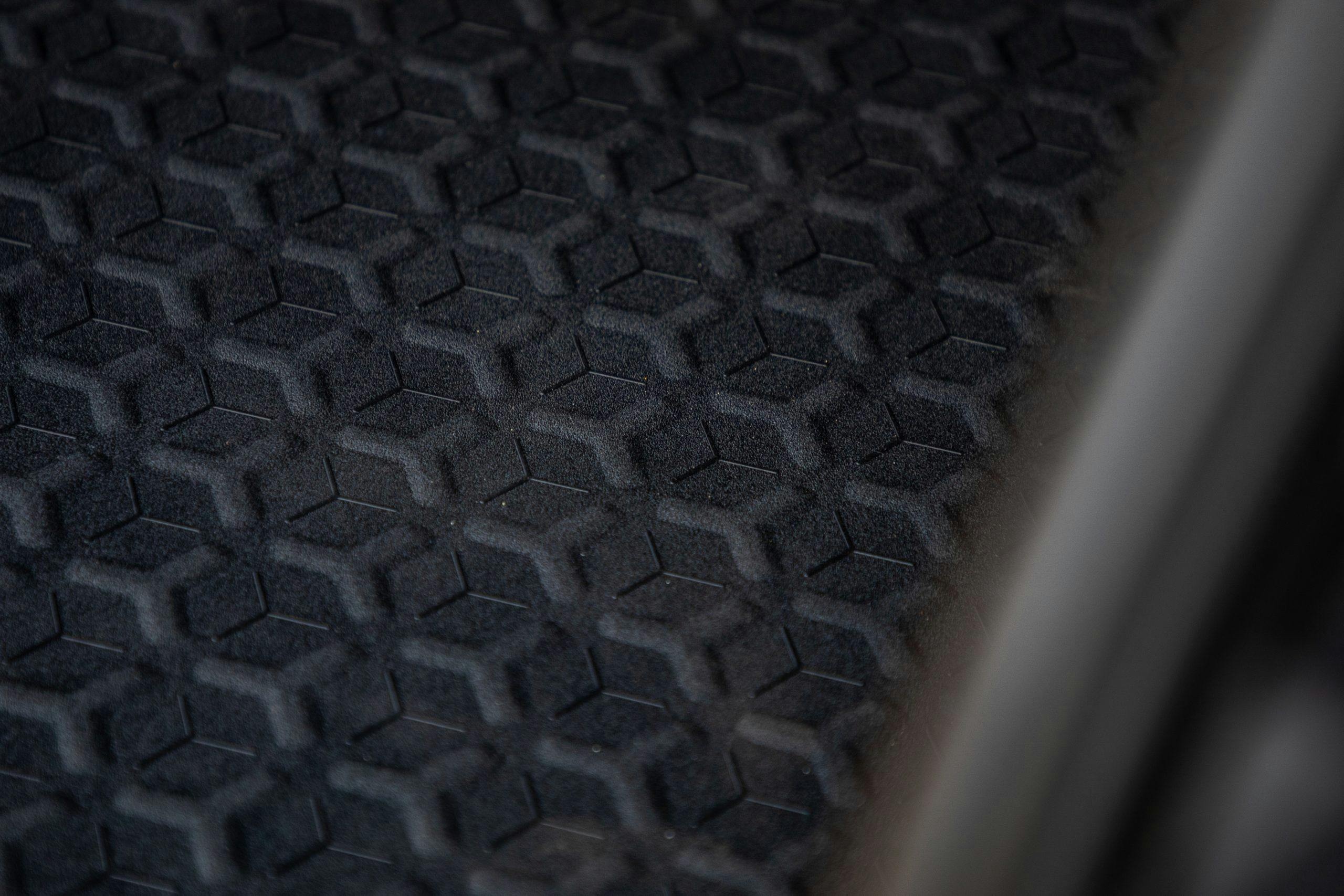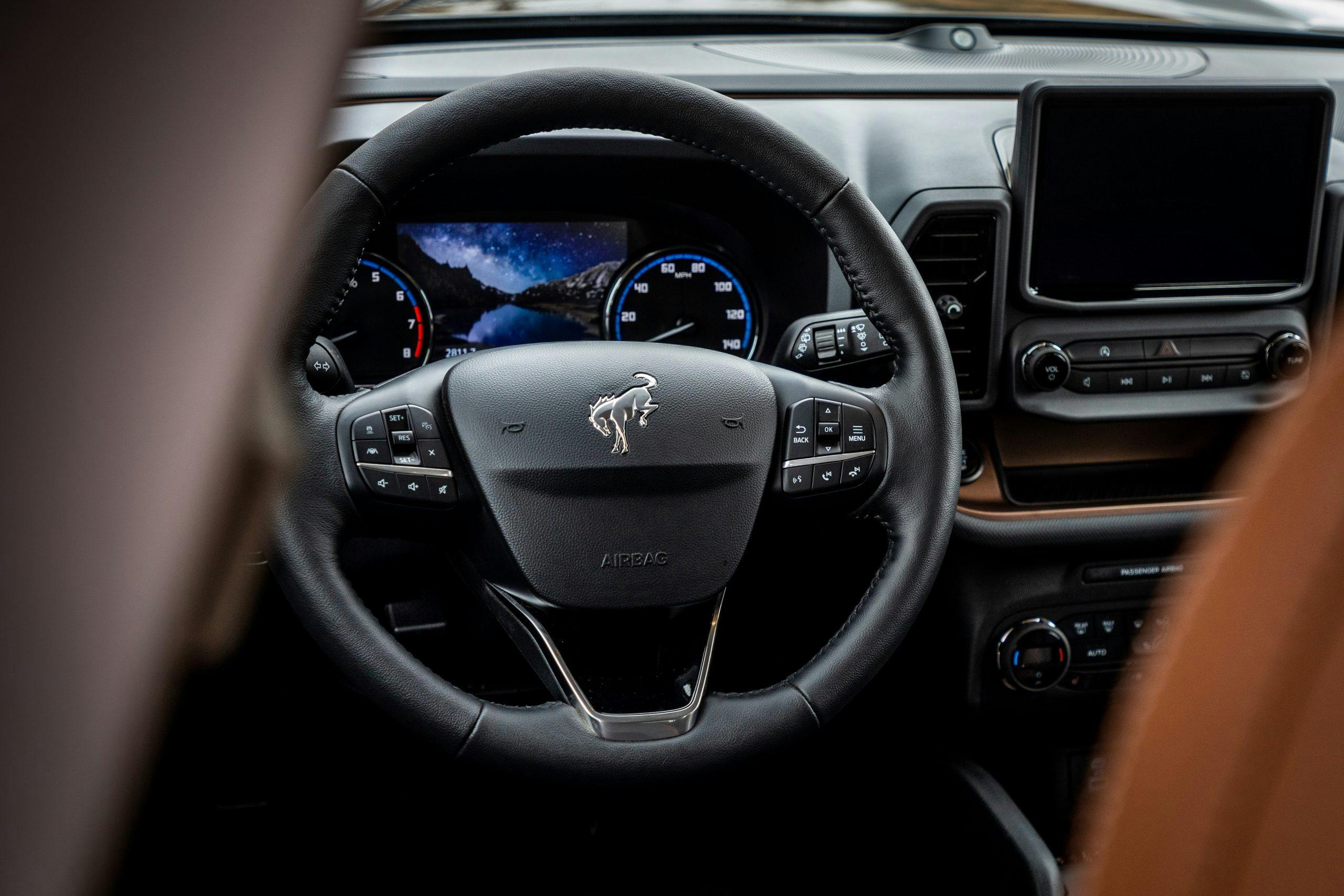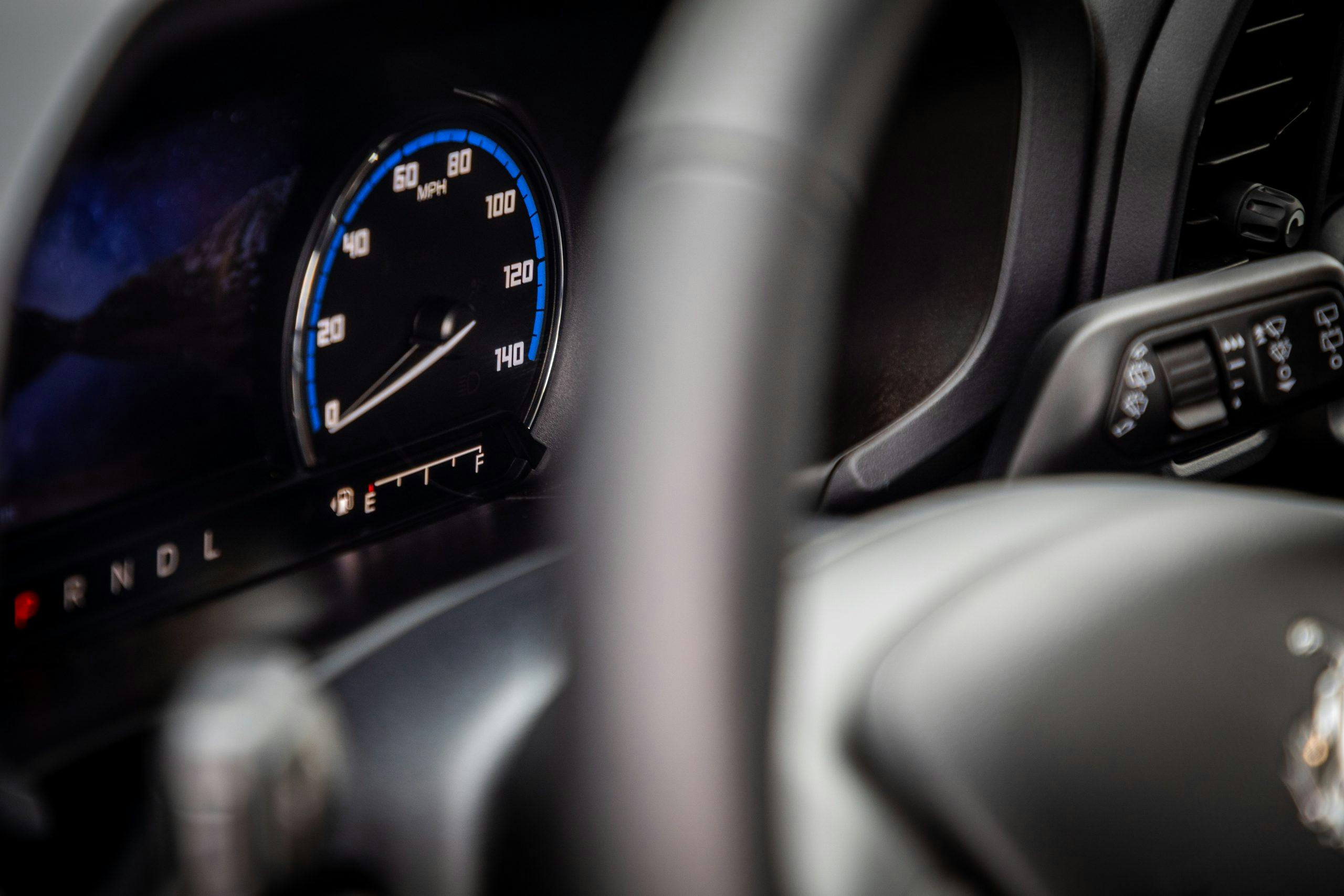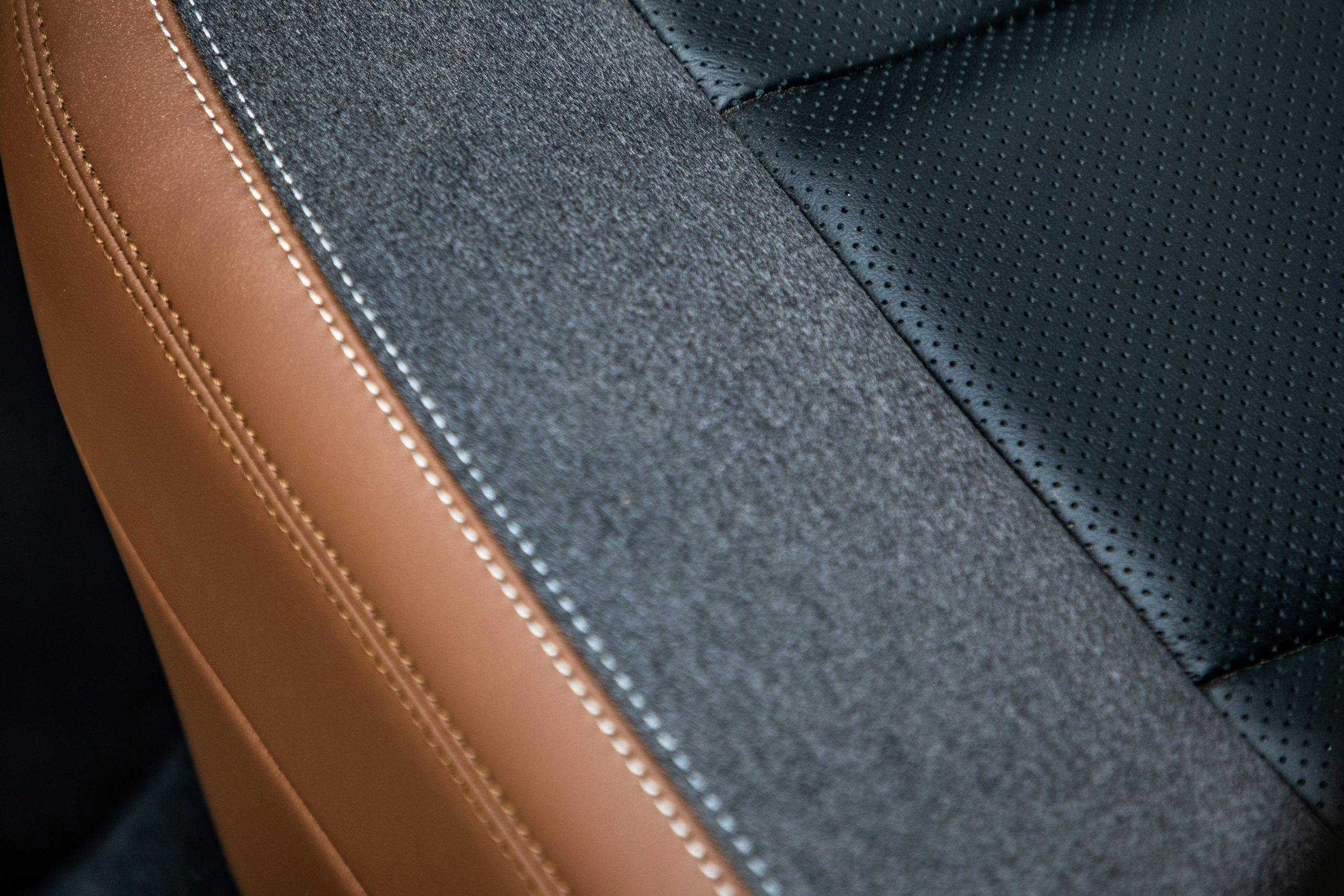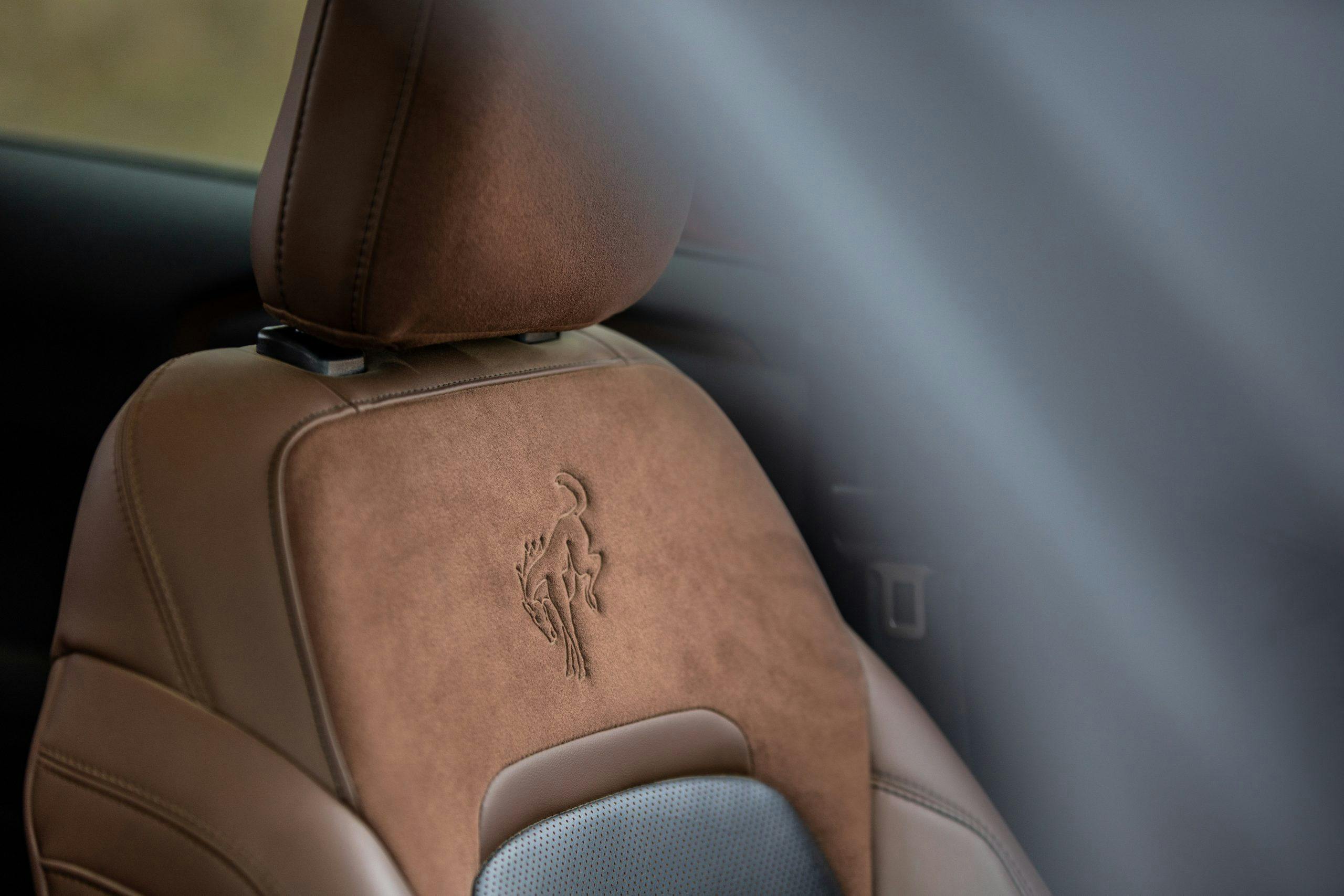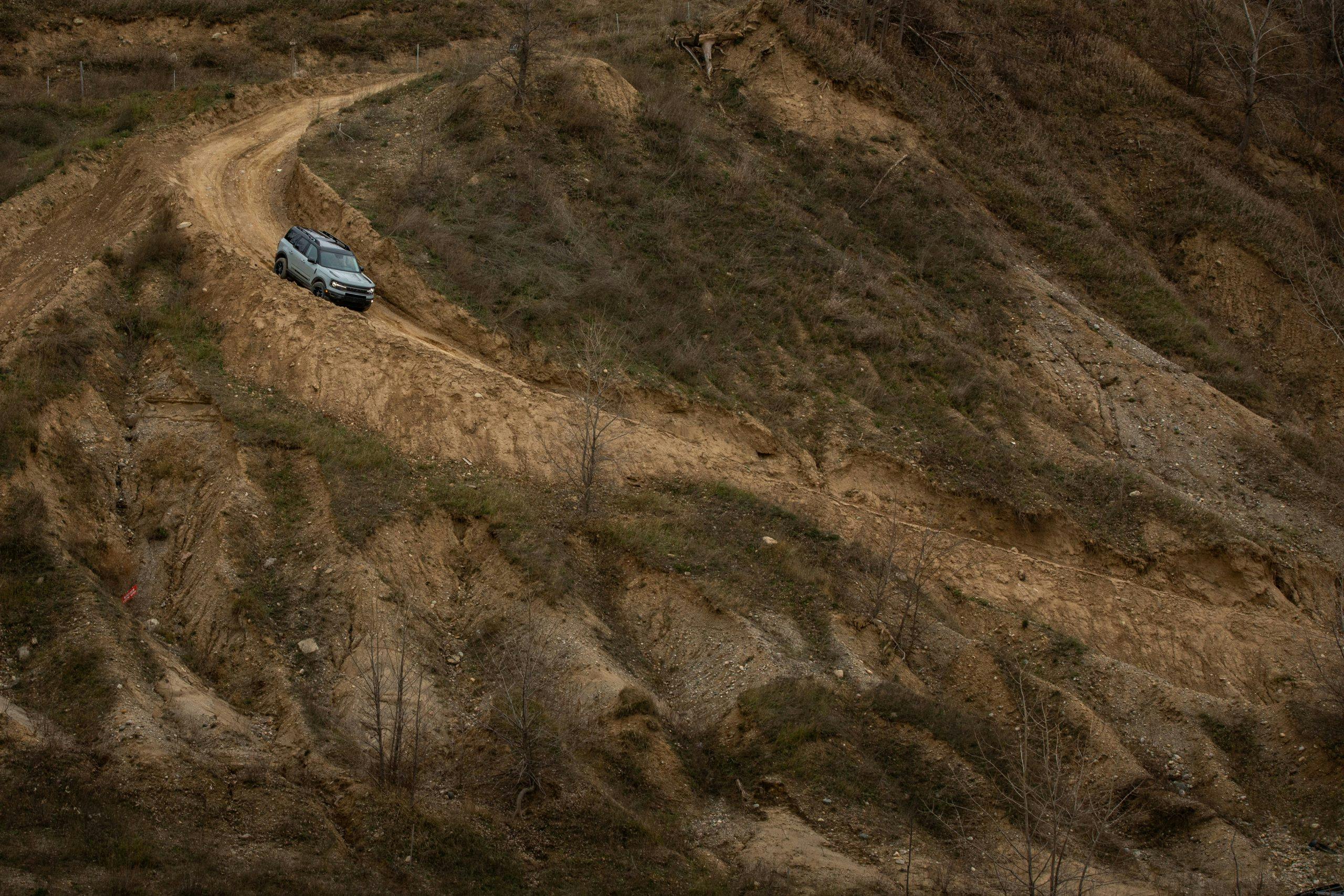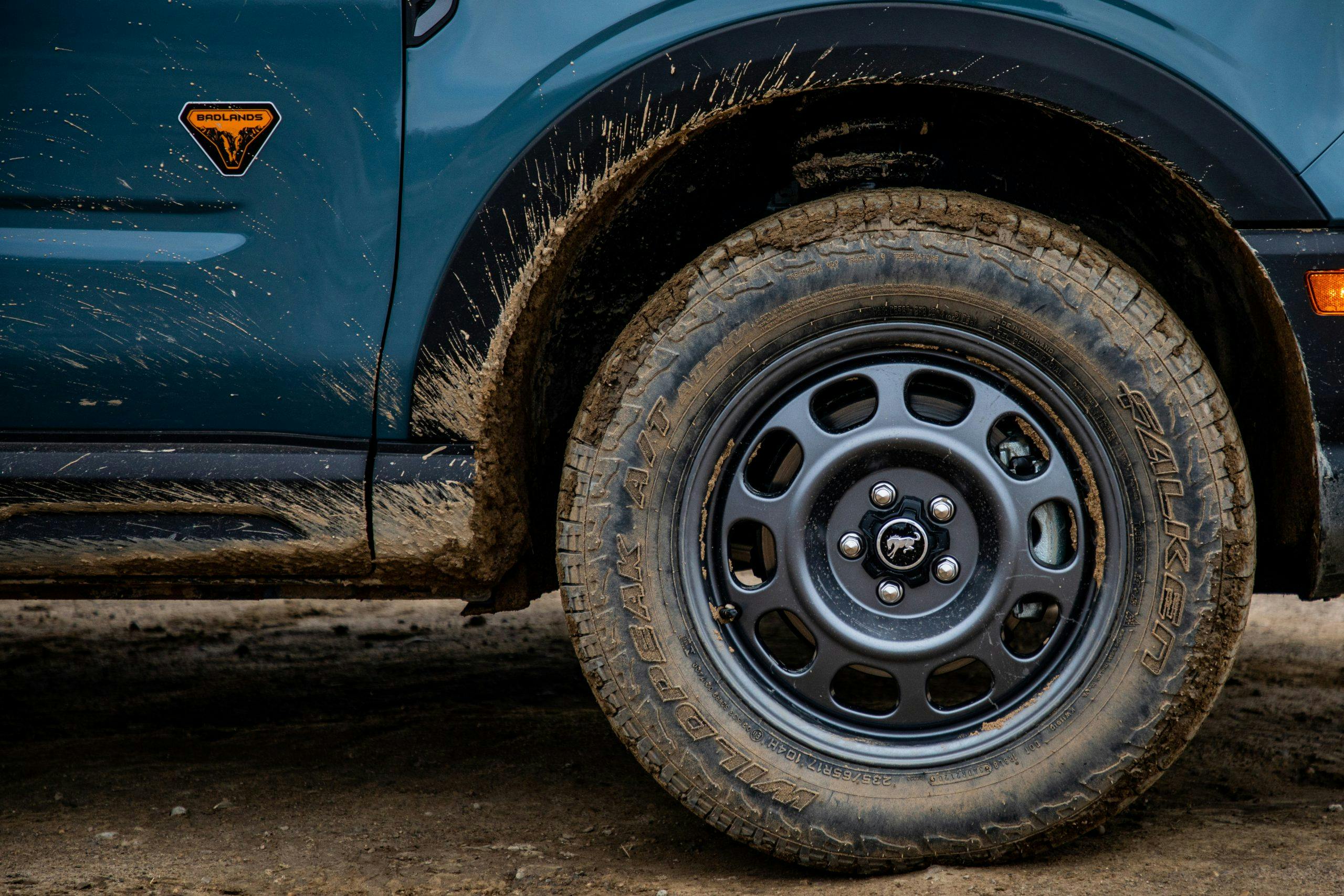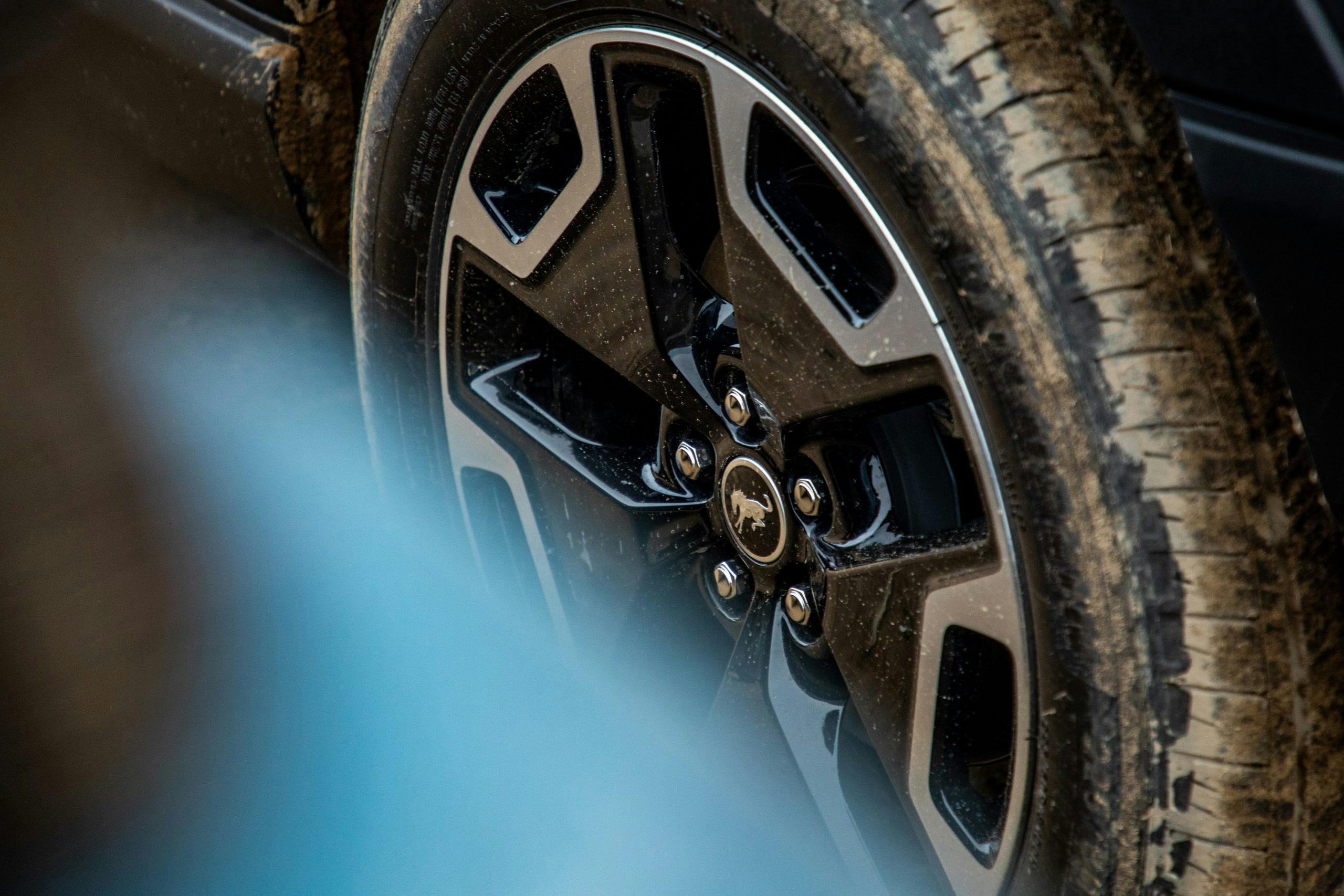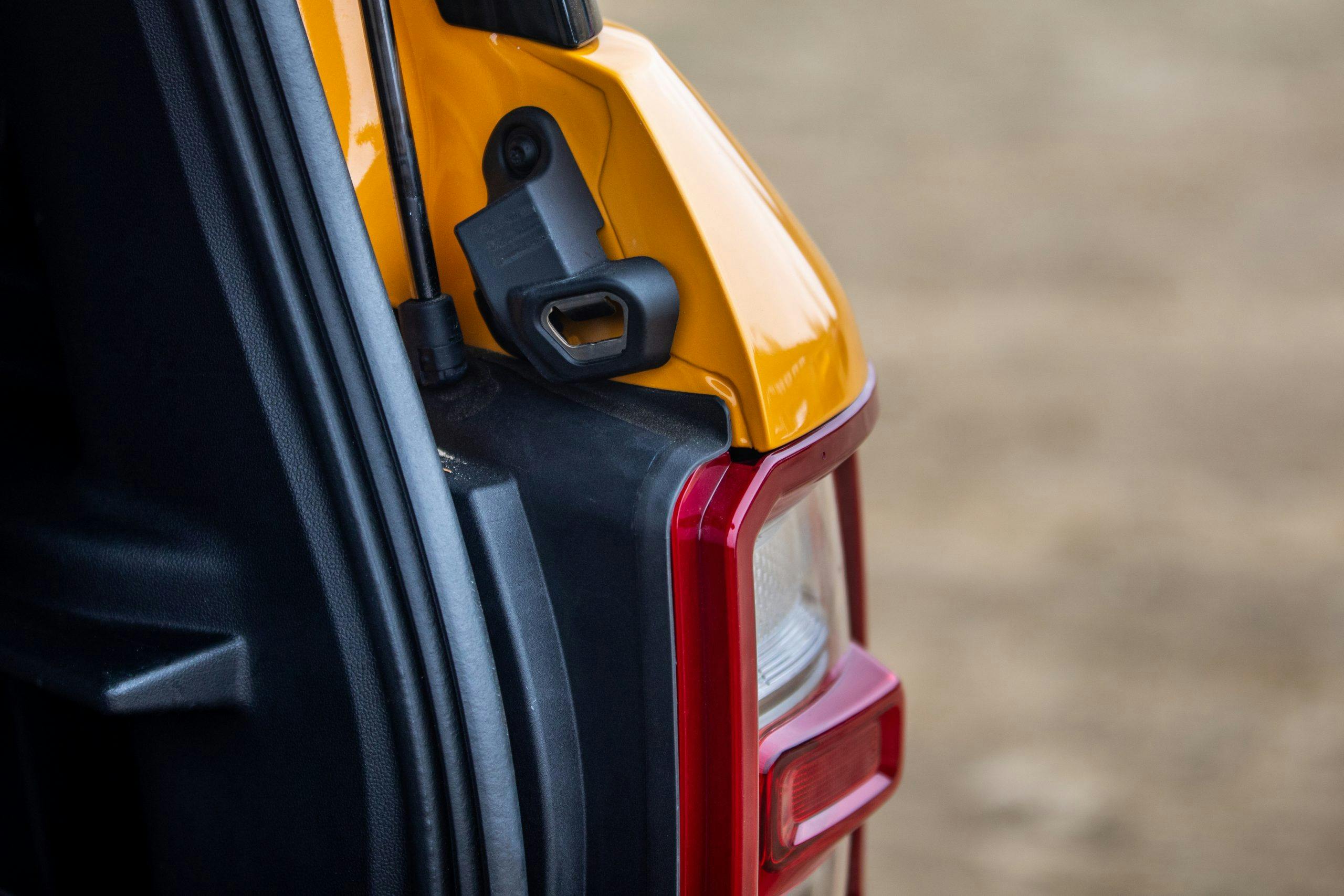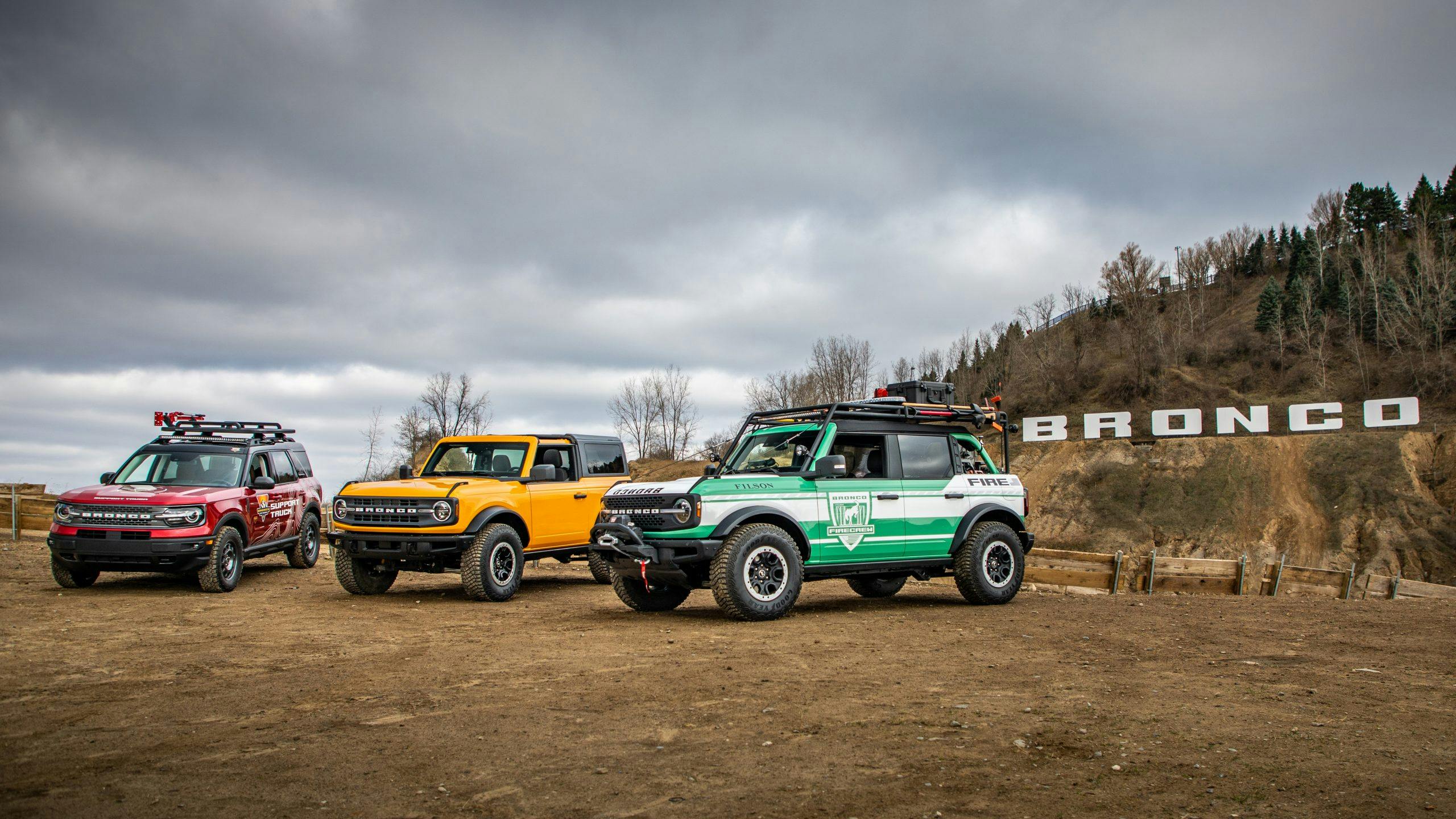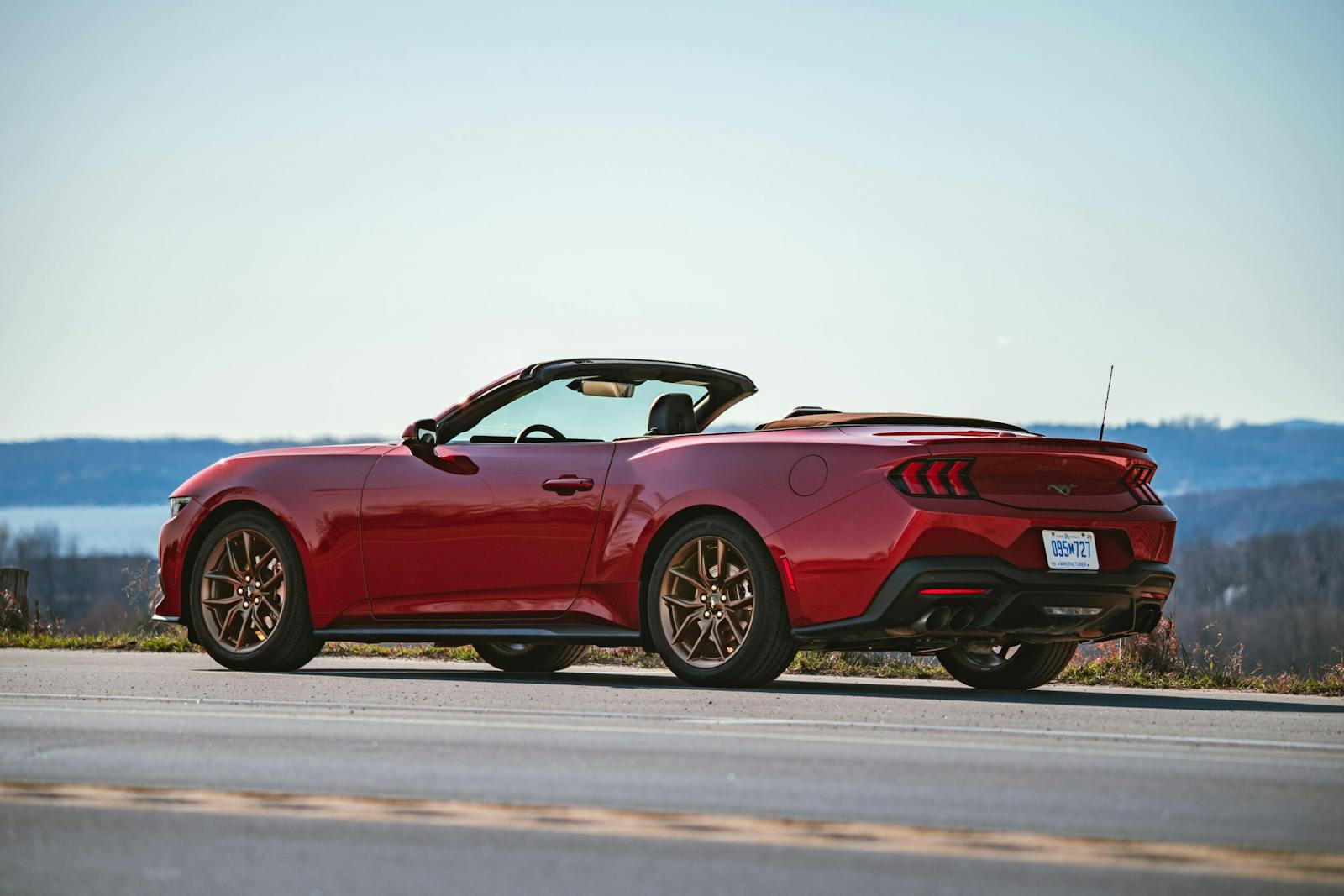Review: 2021 Ford Bronco Sport Badlands
When Ford finally announced the revival of the Bronco in 2017, the fanfare was palpable—at long last, a Real Deal Holyfield challenger to the Jeep Wrangler. The announcement of a Bronco Sport alongside it, then, felt like Mom was making you give your little brother a controller while you played Halo. An Escape-based off-roader trading on the name of one of the all-time greats? Don’t everybody jump at once.
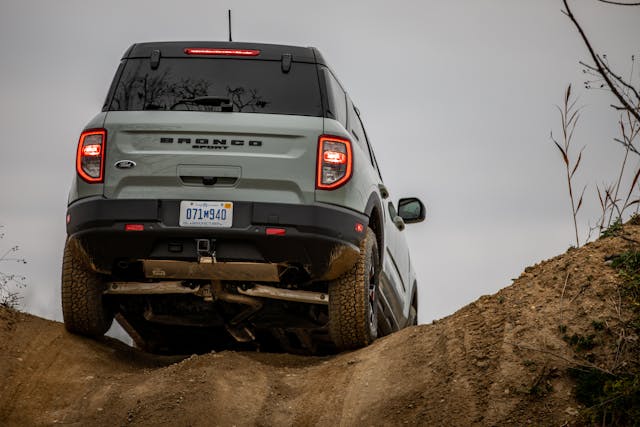
After a few hours behind the wheel of a Bronco Sport in and around the Holly Oaks ORV park in Holly, Michigan, we can confirm that skepticism regarding the Sport’s worthiness is mostly misplaced—provided you’re looking at the upper-echelon Badlands trim. Stick with us here.
Adventure—or at least the possibility of it—sells these days, and a global pandemic only makes the notion of extreme social distancing that much more appealing. If the full-bore Bronco is a device for flattening mountains, then the Bronco Sport is the machine of choice for the campers, climbers, and riders of said mountains: a tool to complement your adventuring arsenal, not the main event. The Sport will share trailhead parking lots with the likes of Jeep Compass Trailhawks and Subaru Crosstreks, but it aims to best both of those vehicles in expedition worthiness.
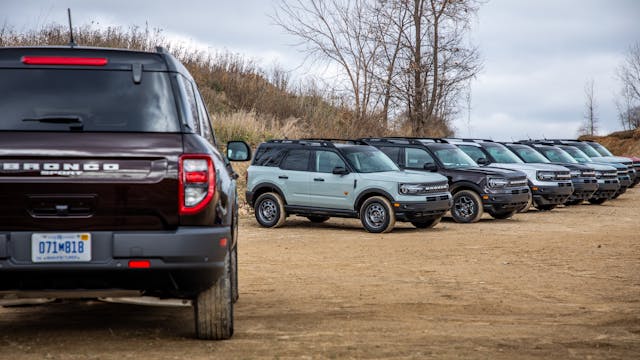
We drove two trim levels at Ford’s socially-distanced media event. For the on-road portion, we hopped in an Outer Banks model slathered in handsome Rapid Red paint. That machine stickers for $36,540, including an eye-watering $1495 destination fee. The off-road portion was handled in a range-topping Badlands model.
Spoiler alert: The Badlands was the more impressive offering, and not just because it costs more. You get a shocking amount of extra stuff, including an entirely different engine. (More on that in a moment.) Our test Badlands wore the redundantly named $2595 Badlands Package, which includes niceties like a Bang & Olufsen ten-speaker stereo, a power moon roof, and a heated steering wheel. The whole thing rang the register for $38,985, including that same massive destination fee.
The Badlands is one of just two trim levels—the other being the sold-out First Edition—to get a 2.0-liter turbocharged four-cylinder good for 250 hp and 277 lb-ft of torque. The lower trim levels—Base, Big Bend, and Outer Banks—utilize a 1.5-liter turbo three-cylinder producing 181 hp and 190 lb-ft. Both engines are paired with an eight-speed automatic. The Badlands and First Edition trims get a Dana twin-clutch rear differential that can shuffle 100 percent of available torque to the rear wheels, as well as close both clutches to serve as a locked differential. Larger-engined Bronco Sports get wheel-mounted shift paddles and additional coolers for the rear drive unit and transmission. Although all Bronco Sports offer 4×4 capability, they all operate in front-drive mode under light load in order to boost fuel economy.
We’ll try to keep the “baby Bronco” euphemisms to a minimum, but when the junior and senior models are parked next to each other, the resemblance is undeniable. That’s intentional—Ford has now positioned the Bronco as an “icon” sub-brand, not just a model, a group of vehicles that embody specific ideals. The family resemblance is strongest in front, where all Broncos carry single round headlights and B-R-O-N-C-O grille lettering. The blocky, upright proportions and short overhangs purport a vehicle that will thrive off-road, at least in spirit.

This is a handsome vehicle, especially in Badlands trim, and especially when fitted with the “steelies” (17-inch alloy wheels styled to resemble steel wheels) and optional 29-inch Falken all-terrain tires of our tester. Spec those Falkens, and the Badlands boasts impressive approach, breakover, and departure angles—30.4 degrees, 20.4 degrees, and 33.1 degrees, respectively. Maximum water-ford depth also jumps from 17.7 inches on the three lower trims to 23.6 inches in the Badlands, thanks to a higher air intake and rear-differential and transmission vents.
Nowhere is the “adventure always” tactic more apparent than in the interior. Ford says that all Bronco’s are “built wild,” with a sense of exploration baked into every aspect of the vehicle. The interior is chock-full of outdoors-minded details, from special canvas loops on the seatbacks to LED floodlights in the hatchback and a rubberized floor in the Badlands for easy cleaning. Our Badlands also had sported the optional seven-mode G.O.A.T. (Goes Over Any Terrain) switch, which adds two drivetrain settings—mud/ruts and rock-crawl—to the existing normal, eco, sport, slippery, and sand settings present in all Sports.
On the road, we were pleasantly surprised with the three-cylinder power unit in the Outer Banks. There’s adequate, useable torque here—peak twist arrives at 3000 rpm—little vibration, and enough horsepower to let the Bronco Sport get out of its own way. The three may lack nearly a liter of displacement compared to the 2.4-liter Tigershark four in the Jeep Compass, but thanks to forced induction, it’s on level playing ground in terms of horsepower, and it feels considerably less thrashy than the engine in the Jeep.
That said, although the three lower Bronco Sport trims are cast as more rugged than Ford’s own Escape, they don’t do an adequate job of convincing the driver that the Sport isn’t merely an Escape in a blocky suit. The former may have a shorter wheelbase—one inch under the Escape’s 106.7 inches—but the standard Michelin Primacy all-seasons and meager off-road hardware belie the reality that these bottom trims will be happiest on a dirt road at best. Following an Outer Banks around the ORV park only confirmed that.
Around that same off-road course, the Badlands was hugely impressive. The model-specific springs, hydraulic rebound stops, and cast knuckles really do change things. The trade-off may be a more wallowy ride on pavement, but a Badlands is more than capable of comfortably transporting you from your Denver apartment to the trailheads northwest of town. The various G.O.A.T. modes make a real difference in the driving experience, particularly in throttle response. Sand mode is hilarious fun, slackening the traction control and letting you play fast and loose in the dunes. It’s no Ford Raptor, of course, but few vehicles are. Rock-crawl mode slips the throttle an Ambien and utilizes the trucklet’s 18:1 crawl ratio to help soften the torque surges common to turbocharged engines. But that mode isn’t perfect, and despite its best efforts, the on-off torque delivery still made for some jumpy moments.
It’s worth mentioning that serious rock-crawling also represents the upper end of the use-case for a vehicle like this. For the 18 of you with a Bronco Sport Badlands on order and an eye on the local rock garden, it can be done—just make sure you practice those precise pedal inputs. For slightly less beaten trails, there’s Ford’s Trail Control off-road cruise-control. This system, which manages brake and throttle inputs for less-experienced drivers, can handle serious topography, both in terms of short rut changes and steep climbs. The pedals-off approach takes some getting used to, but the system is ultimately impressive—a bit rough around the edges in places, but likely to make buyers happy.
Another wonderful piece of tech for the roads-unpaved newcomer: the Bronco Sport Badlands class-exclusive front camera. The Sport’s blocky proportions can be a nuisance on the trail—that squared-off hood obscures a lot of what’s immediately ahead of you, particularly on an incline. The front-end camera takes a lot of the uncertainty out of climbing. Simply tap the camera button just to the right of the hazard lights, and a 180-degree picture of what’s directly ahead fills the 8-inch touch screen in the center stack.
As to which one you should buy, we ask you this: How serious are you about taking the adventure hook? Honest needs appraisal is hard, especially in an automotive market seemingly capable of talking literally anyone into buying a full-size pickup. If you intend to make a regular habit out of venturing past the trailhead parking lots, if you want to dip your toes into the growing world of overlanding—it has to be the Badlands. You get a vehicle that will realistically serve, with aplomb, all the adventure needs of 90-some percent of the driving population, and for less than $40,000.
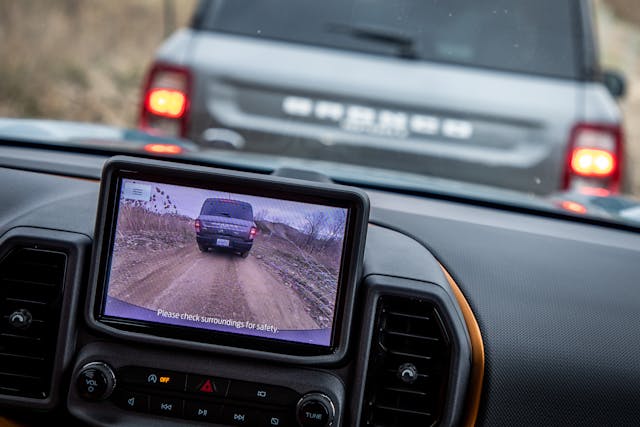
Few people will fit that mold, however. Ford turned the Bronco into a sub-brand in order to leverage the name’s image and sales potential, and a shocking number of Bronco Sports will be sold to people who simply want a ticket to the party. In plain terms, the Sport is an attractive vehicle with acceptable base-level equipment. It’s enough for what most buyers will use it for, and stylish enough to seem different and fun.
For the discerning enthusiast, however, it’s Badlands or nothing. That trim offers everything you could want in an adventure-mobile at a compelling price. That the badge gets you in the door with a name we’ve long loved is just icing on the cake.
2021 Bronco Sport Badlands
Price: $38,985 (as tested)
Highs: The right mix of looks, tech, and hardware to achieve everything weekend warriors need to accomplish. A real-deal adventure aid.
Lows: An engine still prone to surges in torque that can make rock-crawling a bouncy ordeal. The unshakeable reality that you didn’t spring for the full-fledged Bronco.
Summary: More than enough for most people who think they want a Bronco, even if it upsets the diehards. Mom was right—everyone else deserves a chance to play.
